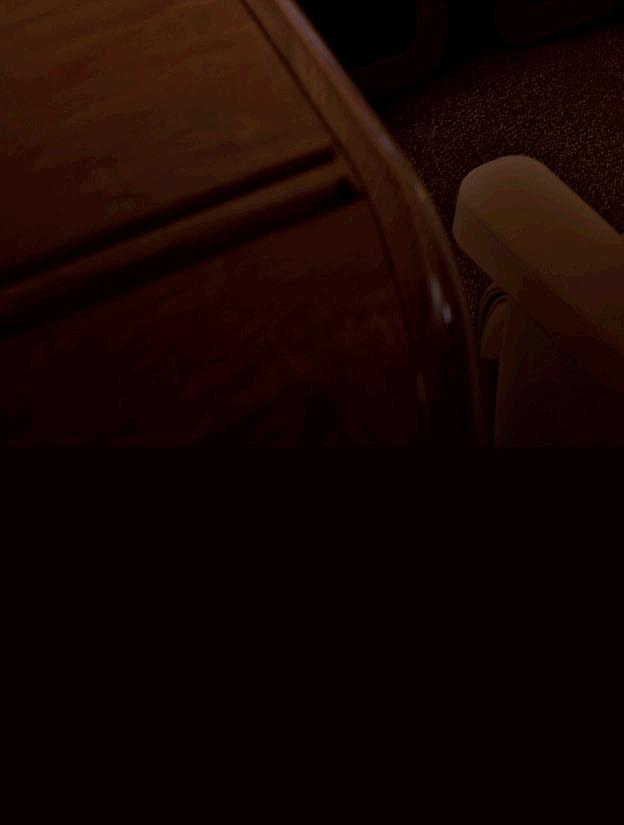WORLD’S 100 GREATEST GOLF COURSES
WARM-UP LIKE BRIAN HARMAN
PRO-FILE: THOMAS GRACEY



WORLD’S 100 GREATEST GOLF COURSES
WARM-UP LIKE BRIAN HARMAN
PRO-FILE: THOMAS GRACEY









RISING TIDE Portmarnock’s Championship Course in Ireland leaps 25 places in our latest World’s 100 Greatest Courses ranking (page 42).

6 The Misfortunes Of McIlroy
Have we witnessed the biggest meltdown of Rory’s career? by harry
grimshaw
Starter
8 Real Club Valderrama
“The Augusta of Europe” has hosted numerous high-profile tournaments. by harry grimshaw
10 Journeys Min Woo Lee with keely levins
12 Sky’s The Limit For Thomas
How has he become the youngest Senior PGA Instructor in the Middle East, aged just 23? by harry grimshaw
16 Phil Mickelson’s Hole-in-one Claim Why I believe Lefty. by jerry tarde
62 Take the Left Side Out of Play
Si Woo Kim’s hook fix. by ron kaspriske
64 What’s in My Bag Danielle Kang with keely levins
66 Lucky Break
The unlikely story of a man who quit his job to hand-stitch headcovers. by matthew rudy
18 Sergio Shines In Spain
The Fireballs skipper has an unbelievable record at Valderrama. by harry grimshaw
20 Bland – Born Again England’s Richard Bland has had a revitalised career since joining LIV Golf. by harry grimshaw
COVER STORY
22 How Scottie Scheffler Got So Good
I watched an 8-year-old grow up to be World No. 1. by randy smith
30 A Tale of Two Troons
The five holes that will decide the Open Championship. by derek duncan
40 Warm-up Like The Open Champion
“He isn’t a player that has negative thoughts, he’s just waiting for the positive thought.” by justin parsons
42 World’s 100 Greatest Golf Courses
Our latest biennial ranking (outside of the United States). by derek duncan
52 Bomb It Like a Kid Again
Adds yards and take years off your drives. by padraig harrington
The Gulf Club
60 Club News
A gallery of just a handful of the local winners in the amateur circuit in the region.

Have we witnessed the biggest meltdown of Rory’s career?
By Harry Grimshaw
What was turning out as a proper Sunday showdown between Rory McIlroy and Bryson DeChambeau at Pinehurst No. 2, ended in dismay for the Ulsterman who was, some might say, sitting in the best chance he has had at winning a major championship in 10 years, with just three holes left to play.
But it wasn’t until two tentatively short missed putts on the 16th and 18th in the U.S. Open which sent Rory packing and departing the premises of the Pinehurst Resort within seven minutes of Bryson’s winning putt, which he watched on a TV, and he was on his Gulfstream 5 out of the county in the fastest means possible remarkably within an hour.
There was no congratulatory hand shake for Bryson, no post round TV or media interview, Rory wanted out. Understandably if you think about it with everything Rory has been dealing with especially the last month. It all just got too much for the World Number Two. But we get it, sometimes you just have to jump ship.
more than anyone! He’s able to run away with standard Tour event, he just can’t seem to pull the trigger when it comes to the major scene.
This recent major mishap is a bad one. It outshines The Open in 2022 at St Andrews when Cameron Smith came from behind and took the Claret Jug away from him. It might even eclipse his 2011 Masters wipeout when he failed to capitalise on his fourshot lead going into Sunday.
But, then the things is, he did come back then in his very next major, the U.S. Open, to win by eight strokes. A feat only one other person has ever done since 1900, and that’s Tiger Woods.

Usually gracious in defeat, McIlroy has come out on social media and explained his swift exit from Pinehurst and congratulated Bryson in his victory, while also explaining that he is now taking time off from competitive golf for a few weeks before his title defence at the Genesis Scottish Open on the DP World Tour, the week before his last chance at the final men’s major of the year at The Open at Royal Troon in mid-July.
What is it down to though? Why can’t Rory break this major obstacle? I’m sure he wants to know the answer to unlocking that
This is the guy who has won the FedEx Cup three times, the Race to Dubai five times, he’s a fourtime major champion, and more specifically one of three players to win four majors by age 25, joining the company of Jack Nicklaus and Tiger. Maybe everything that Rory has been through on and off the course over the span of his career is having a dampening effect on his performance on it. Pressures of social media, family, LIV Golf it all adds up, maybe he takes too much on his plate. He already has taken a break before for mental health reasons.
I guess we can live in hope that he returns refreshed, recharged and rejuvenated.

editor-in-chief Obaid Humaid Al Tayer
managing partner & group editor Ian Fairservice
editor Harry Grimshaw
art director Clarkwin Cruz
editorial assistant Londresa Flores
instruction editors Conor Thornton, Scott Edwards, Alex Riggs
chief commercial officer
Anthony Milne
publisher David Burke
general manager - production
S. Sunil Kumar
production manager Binu Purandaran
THE GOLF DIGEST PUBLICATIONS
editor-in-chief Jerry Tarde
senior director, business development & partnerships
Greg Chatzinoff
international editor Ju Kuang Tan
GOLF DIGEST USA
editor-in-chief Jerry Tarde
general manager Chris Reynolds
editorial director Max Adler
executive editor Peter Morrice
art directors Chloe Weiss Galkin
managing editors Alan P. Pittman, Ryan Herrington
playing editors Collin Morikawa, Jordan Spieth, Bubba Watson
4 390 3550; Fax +971 4 390 4845 Email: motivate@motivate.ae
abu dhabi
14th Floor, Office 1406, Makeen Tower, 9th Street, Al Zahiyah, PO Box 43072, Abu Dhabi, UAE
Tel: +971 2 677 2005; Fax: +971 2 657 3401
Email: motivate-adh@motivate.ae
saudi arabia
Regus Offices No. 455 - 456, 4th Floor, Hamad Tower, King Fahad Road, Al Olaya, Riyadh, KSA Tel: +966 11 834 3595 / +966 11 834 3596
Email: motivate@motivate.ae
london
Motivate Publishing Ltd, Acre House, 11/15 William Road, London, NW1 3ER, UK
Email: motivateuk@motivate.ae





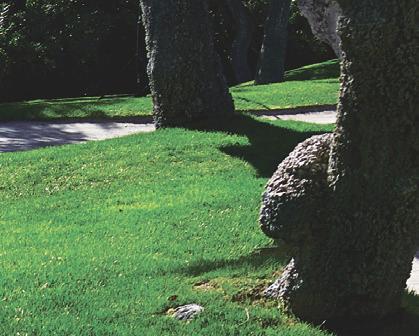

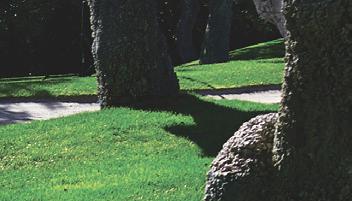
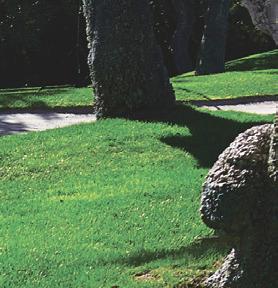








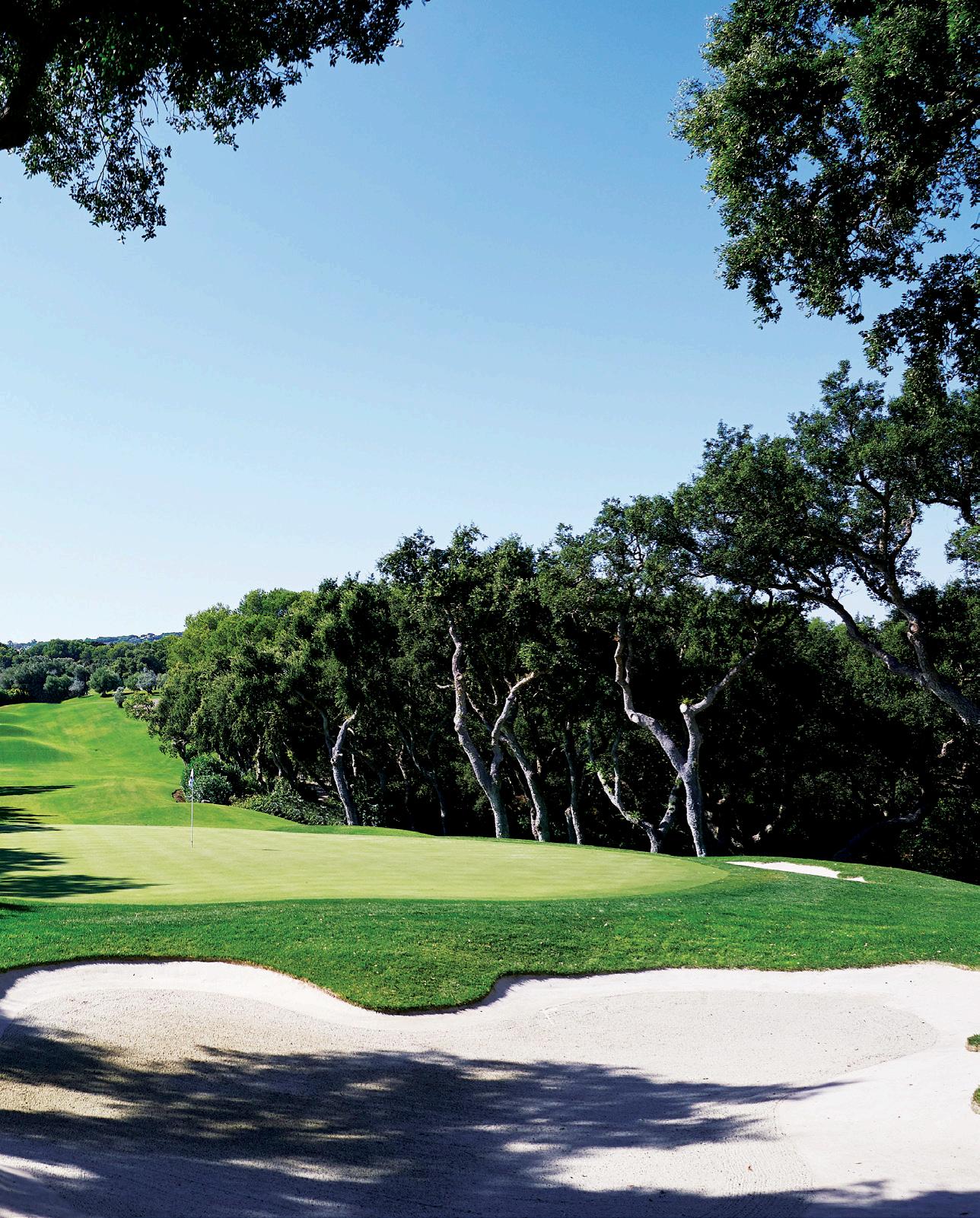
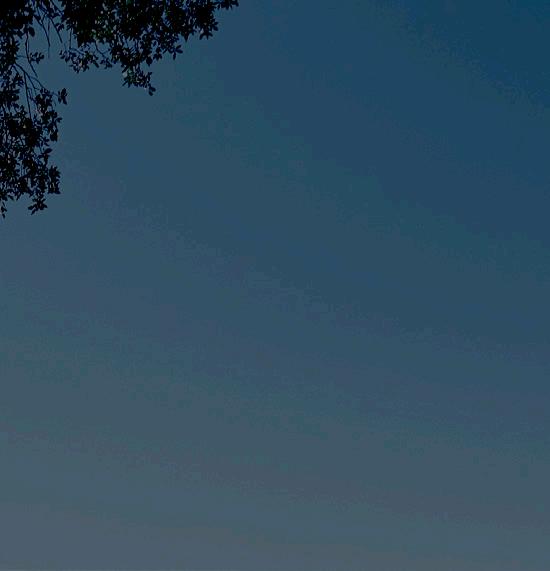
Designed by Robert Trent Jones Sr, Real Club Valderrama has been the venue for numerous high-profile tournaments, including the Ryder Cup in 1997.
By Harry Grimshaw
Nestled on the southern coast of Sotogrande in Spain, the respected Real Club Valderrama remains majestic as ever, with its rich legacy in the world of golf.
A er it’s redesign by legendary Robert Trent Jones Sr, the club burst onto the scene in 1988 by taking the reigns in accommodating the inaugural Volvo Masters — a hallmark event on the DP World Tour’s schedule — a role it retained until 2009.
The pinnacle of Valderrama’s legacy emerged in 1997 when the club hosted the 32nd Ryder Cup, an event of intense significance which culminated in Europe’s captivating victory, with the late great Seve Ballesteros at the helm.
In the years 1999 and 2000, it was the famed host to two editions of the World Golf Championships – American Express Championship, which was claimed by Tiger Woods and Mike Weir, respectively.
In more recent times, the heritage of Real Club Valderrama has been preserved through the hosting of eight editions of the Andalucía Valderrama Masters on the DP World Tour.
Furthermore, Real Club Valderrama welcomed LIV Golf 12 months ago, boasting some of the best players in the world back to its fairways, as it prepares once again to host them this July.

My sister is a major champion, but my path to the tour wasn’t always as clear
By Min Woo Lee with Keely Levins
My mom was a golf professional and started teaching at the local range when my older sister, Minjee, was born. Minjee and I grew up following Mum around at the range. My dad started playing golf when he met my mum and became a plus-handicap. I didn’t love golf as a kid, but since we’re a golfing family, it’s always been a part of my life. Minjee has won multiple major championships, and it was always clear growing up that she was going to be great. It took me longer to fall in love with golf.
I was a bit of a rascal as a kid. I had a lot of energy, and it was hard to focus on golf. I gravitated toward sports with more action. I liked playing basketball, and I was a competitive swimmer, too. I don’t remember any specific golf lessons my parents taught me. It’s hard to listen to your parents when you’re young, but they did keep me around golf enough to help me get pretty good—in spite of myself.
● ● ●
Looking back, I’m glad golf didn’t click for me right away. I credit my strong chipping and putting to having good hand-eye coordination, which I was able to develop by playing other sports. As I got older, I realised I could hit it further than just about anybody, and that was fun. When I was 15, I was selected to represent my state in a junior tournament in Australia. I loved the social aspect of it; that’s what really made me start to enjoy golf.
● ● ●
I started playing and practicing more, even though I still hate all the boring stuff. My sister, who is now a U.S. Women’s Open champion, has always been good about hitting hundreds of balls at the range. I would hit like 30 and get tired of it. She would do putting
drills for hours; I would get bored and start messing around, putting balls in impossible places, trying to get up and down, and seeing if I could get a reaction from other people.
● ● ●
When I was 17, I won the U.S. Junior Amateur. My sister and I are the only sibling duo to have both won it. When I was 19, I wanted to turn pro, but my parents, coach and agent convinced me to stay an amateur. They told me I wasn’t emotionally mature enough. They were right. I spent another year playing in Australia, where I matured by watching the older pros. When you’re young, a bogey feels like the end of the world. The pros aren’t like that. I played alongside guys who made mistakes and then kept bouncing back. I tried to copy those composed demeanors I saw around me, and I got better.
● ● ●
I turned pro when I was 20 and played events on the DP World Tour and the Korean Tour, as well as in Australia. In 2021, I broke through and won the Scottish Open, one of the biggest events on the DP World Tour. Suddenly I knew for certain that I could play against the best players in the world. That win got me into the Open Cham-
pionship the following week. I missed the cut but got some more starts on the PGA Tour. Traveling all the time and being away from friends gets hard, but I’m a gamer; I like Call of Duty. I travel with my gaming laptop so that I can play wherever I am. It’s a way to keep in touch with my friends from around the world.
●
Seeing Minjee succeed helped me transition to pro golf, even though we go about the game completely differently. She plays in a straight line, but I play in a crooked line and am always scrambling. I’m trying to be more like her in my practice, spending long, focused hours on the range. In 2023, I earned special temporary PGA Tour status, finished T-5 at the U.S. Open and officially got my card for 2024.
●
I’m a rookie, but I’ve already picked up a following on social media. I like to make golf fun and am trying to give it a better image on Instagram and TikTok. Not everyone thinks highly of social media, but I grew up with it, so it feels natural to me. I work with a team that films my life inside the ropes and edits videos of me doing everything from messing around in pro-ams to signing autographs. The response has been great.
●
There is this phrase, Let him cook, which basically means, “Let him do his thing,” that people started posting about me after I finished T-6 at the 2023 Players. It took off, and the next thing I knew, there were huge groups in the galleries wearing chef hats and cheering for me. I get energy from that stuff, so I embrace it. I like being in the spotlight and trying to make things go viral. The fans love it, too.
● ● ●
I’ve known since I was a teenager that I was going to be pretty good at golf—I just didn’t know when I would get there. I feel like I’m very close. When players get really good, they stop trying to make huge changes to get better. They know their swings, and they are working on the same things over and over. Once you get to that place, you start to get great results. My first few years as a pro were about getting to this level of comfort. Now I’m really going to start cooking out there.
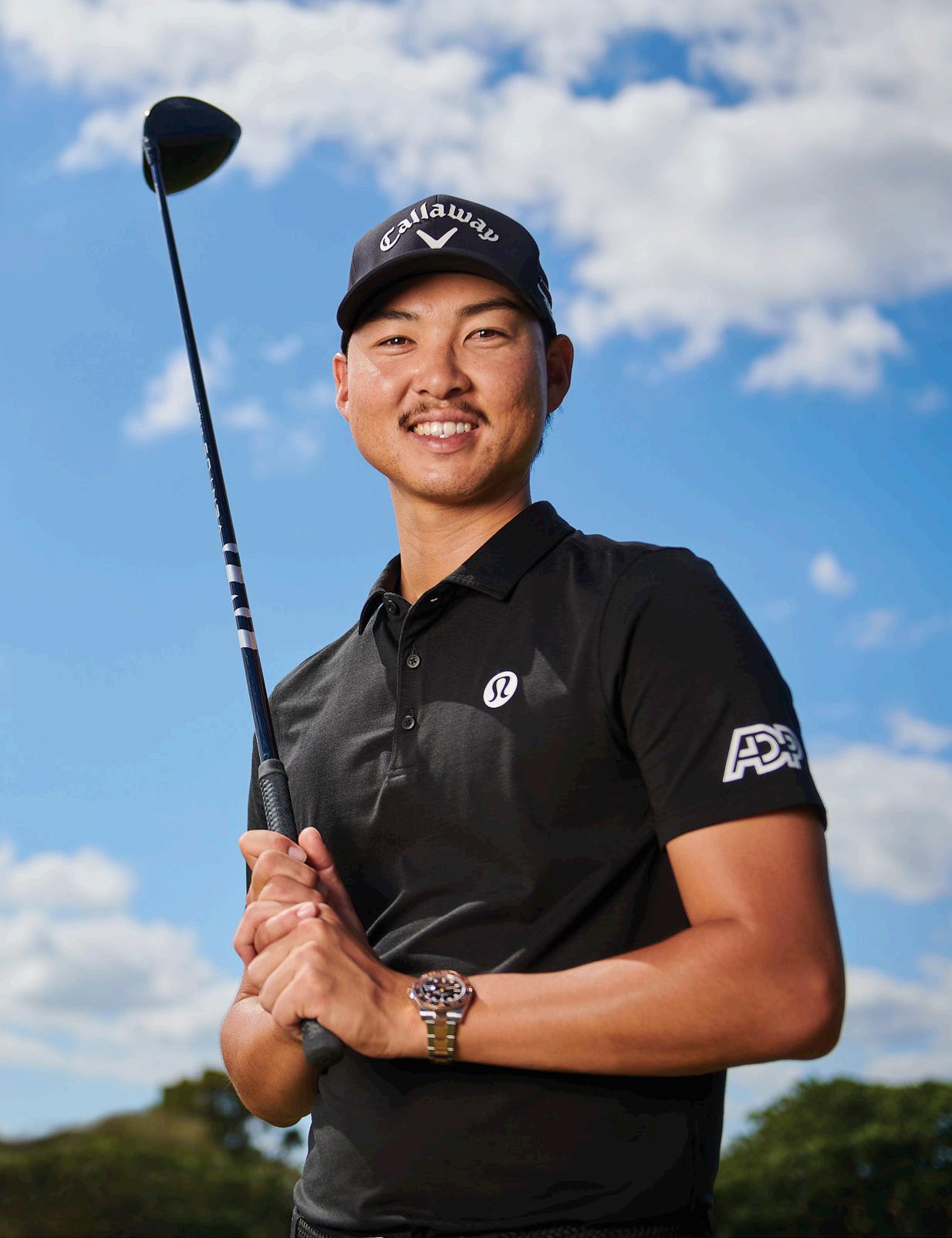
“I think the sense of achievement and pride comes from knowing all the long days and hard work have paid off!”
By Harry Grimshaw
In the fast paced country of the United Arab Emirates, most things are done at 100mph. There is one person in the golf industry in Abu Dhabi who is jumping on that trend, and is not slowing down.
Golf Digest Middle East managed to pin down Thomas Gracey from Abu Dhabi Golf Club, to find out how it was that golf got him from Belfast to Abu Dhabi, and how he has become the youngest Senior PGA Instructor in the Middle East, at just the tender age of 24.
Golf is going places with Gracey.
Firstly Thomas, how did you get into golf back home in Northern Ireland?
It’s obviously a huge sport back there?
It was my grandfather that got me into golf. My parents had me when they were quite young, so my grandparents took me on the weekends to give them a little break. Every weekend, my Granda and I would do something on Saturday, whether it was fishing, biking, football, literally anything you could think of, and of course, golf!
I have very fond memories of practicing putting up and down the hall with my Granda when I was very young. He used to cut out different size circles; the smaller the circle, the more money it was worth if I could putt a ball and get it to land on it. Of course, it was only 50p or £1 at most, but that seemed like a lot when you were a kid!
When you’re that young, at threeyears-of-age, you just do everything.

But the older I got, the more and more I asked to play golf with my Granda. We became best friends, and through him, I fell in love with the game of golf. It turned out I was actually quite good at it, and it just snowballed from there really.
Eventually, my Granda got me junior membership at his golf club, Dunmurry Golf Club. The club had a very well-renowned junior section that produced some amazing amateur golfers that won some of the biggest amateur events in the country! Once I got into that environment, I thrived.
Our junior Fred Daly team at the time had seven players with handicaps that ranged from +3 to 1, and I loved it. Even looking back now, competing with and against juniors my age all over the country was amazing. We had the best times travelling, and we honestly treated it like our lives depended on it—it was our Ryder Cup! I spent every second of my free time practicing and playing I just wanted to get better and Dunmurry Golf Club literally became my home.
With your own golfing career, did you want to just work in golf in some shape? At the start of my career as a young junior within the club, yes, I wanted to play golf for a living on tour. I think that every young golfer who is somewhat good at the game has that dream. But the older I got, the more I realized that even though I was pretty good, there were a lot more people out there that were VERY GOOD!
I did go through a phase within school during my A-levels when I won a few awards for Engineering, so through that, I started to see myself becoming an engineer or an architect. I was always very interested in building things growing up, but I went to do work experience with an interior architect company that did work for some big celebrities in London. But I sat in the office, everyone had headphones in, looking at a screen all day, and I just kept thinking to myself, “This is not for me.” I wanted to be outside with a golf club, so I decided to join the PGA and become a Golf Coach.
It was an easy choice in the end, as I have always been obsessed with the golf swing and why the ball moved the way it did and how we could get our bodies to move a certain way to produce a certain shot. I got very lucky as I entered the PGA with only a week left before the deadline to have a job in the golf industry, but my grandfather was friendly with a golf professional called Andrew Manson at Edenmore Golf Club, who happened to be looking for a new assistant. The rest is history.


We were the number one Mizuno performance centre and ranked top in sales in a lot of accounts from different brands! Andy was and still is a huge influence in my career. I learned so much from him; we became like best friends. Work never felt like work with Andy. He never asked me to do anything he wouldn’t do himself, and we just got stuff done, whether it was a 15-hour shift on Captain’s Day or hauling in stock. The attitude was “let’s get it done” instead of complaining about it. I definitely bring these attitudes to my work now, and I don’t think I would be where I am today without Andy and the things he taught me.
Not only did he teach me a lot work ethic wise, but every night after work, Andy and I would hit balls in the Trackman Simulator. We would play holes and talk about the golf swing. Andy always had time for me in this way and was just as committed to helping people understand the golf swing and finding out as much as possible as I was.
Fitting clubs also became a huge passion of mine while working at Edenmore,
I am a completely different golf coach since being here than I was back home
so in my early golf career, I was heavily focused on gaining as many certifications in custom fitting as possible. But I think knowledge in golf, no matter what aspect, can be beneficial when it comes to coaching in some shape or form.
How did you come to leave Northern Ireland and end up in the UAE at Abu Dhabi Golf Club? I have been here now three years, but I always say it’s like dog years out here!
It’s a funny story. It was my colleague Amy Condon that made me want to come out here! We were playing the Assistant Championships at Nuremore Golf Club, the hilliest golf course I’ve ever played! We played 36 holes a day for two days in lashing rain. It was horrendous, absolute torture! We were having food after the last day in the clubhouse, soaking wet, feeling miserable for ourselves, and Amy told me she got a job offer in Dubai.
Now initially, I was super happy for her, but at the same time, I don’t think my ego could hack it, haha! I thought, if Amy can do it, why not me?!
A day later, I got in touch with Jamie McConnell who at the time was at the Claude Harmon III at The Els Club Dubai, who then put me in contact with Kieren Pratt. Kieren was just made Director of Instruction at Abu Dhabi Golf Club and was trying to build a brandnew team. I had my interview and started within three weeks! It all worked out so perfectly timing-wise.
To be honest, it didn’t really click with me what club I was going to un-

til I googled Abu Dhabi Golf Club and saw the massive Falcon as a clubhouse. I was a little in shock, as the club is very famous for hosting the Abu Dhabi HSBC Championship on the DP World Tour. I had to double-check with Kieren that it was really the same club!
Fast forward to now, I am a completely different golf coach since being here than I was back home. The Middle East is different, and it can easily eat you up and spit you back out and send you home again very quickly. But I love it here and everything about it. I love my life here in Abu Dhabi. It’s a little more homely and slower pace than in Dubai.
The style of coaching at home I would say is slightly different than in Abu Dhabi. We do a lot of group coaching, and that’s something I was thrown into when I got here, considering at the time it was just Kieren, Nick Cork (Senior Teaching Professional), and myself. But luckily, I had two amazing golf coaches with very successful careers in the Middle East to learn from. Both Nick and Kieren learned from Danny Jakubowski, who’s track record in Abu Dhabi Speaks for itself. A lot of his standards in terms of how a golf lesson should be taken are still enforced today, and I think for that to be trickled down to me was very instrumental in my career growth.
It was a lot at the start, but Kieren took me under his wing and taught me a lot when it comes to standards within the golf club and what he would call the storytelling within a lesson—how the lesson should flow from start to fin-
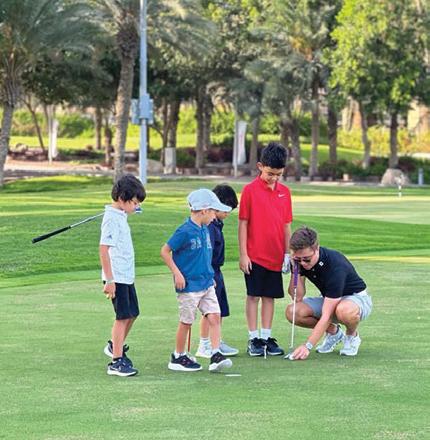

ish. I was like a sponge, soaking up all the information I was getting in the first few months! Working with two amazing professionals at the start made me want to learn more and more, so I started to take more and more extra certifications to learn as much as I could.
I think also the fact that my focus is solely on golf coaching instead of having to be split between club fitting, the shop, and coaching helped a lot. I just wanted to give the best lesson possible. I kind of became Kieren’s right-hand man in a sense, and as a result, I was exposed to a lot very quickly. I think he saw a bit of himself in me to be honest.
I quickly became the highest revenue generator within the academy, an achievement I’m proud to say I have maintained for the past 3 years, consistently growing the revenue I have been able to bring in for the club each year.
You have to be so flexible in the UAE in terms of your coaching. We meet people from all over the world so you have to adapt to a variety of skill levels
As my career progressed, I found myself taking on more and more responsibilities within the golf academy
but not only that the langue barrier. So my coaching style definitely had to adapt to all of this and as a result has made me a far better and more rounded golf coach.
Would you say you have a passion in growing the junior side of the game? How has that developed at Abu Dhabi Golf Club? Yes, absolutely. My love of junior coaching started before I joined the PGA, actually. I got my Level One in coaching very early and volunteered in a lot of schools and at my home club to
help with junior development. I think it comes from the experiences I had with my grandfather, my coaches, the junior section and the environment within Dunmurry Golf Club growing up. Remembering how much joy golf brought me, I wanted to give that to as many juniors as possible.
The junior development at Abu Dhabi Golf Club is something I am very proud of being a part of. We have had great success over the past three years I have been here. I took over the Junior Program when I first arrived here and helped grow the juniors.
The hard work paid off as well as I was asked to run the National Junior Program at Abu Dhabi Golf Club, so I got the chance to write the programs and run the classes. And we successfully ran up to 14 classes a week for the local Emirati community!
When we were able to hire my longtime friend Amy Condon, I quickly passed on the junior program to her, but I still play a role in the running of the program in the background. With Amy and I running the juniors together, we developed a new curriculum and program with progression levels for juniors from complete beginners to others that compete in US Kids Golf Tournaments.
The new program, which was heavily based on challenges and games for enjoyment, was immensely popular. The introduction of scorecards for the juniors to track their progress added to the kids wanting to come more and more! We currently have over 80 juniors that attend class on a weekly basis with ages ranging from as young as four years old all the way to 16/17 years old.
You specialise a lot in men’s group classes as well. Was that your decision to develop and how is that progressing at the club Yes, recently I have put a lot of my focus on the Men’s Program. It was something I always wanted to run and develop after watching Kieren and Nick in that environment in the early days. The more advanced coaching in that environment was definitely something that intrigued me and matched my vision more of how I saw myself as a golf coach.
I wouldn’t say it was my decision directly. As mentioned before, I quickly became Kieren’s right-hand man, so I was brought in on a lot of men’s group
lessons to help when the numbers in a class got big.
Over time, I chipped in more and more, and eventually, I started running my own classes, and they saw a lot of success. I think both Kieren and I saw how we ran the classes the same way: they should be very informative, and the information side had to be worldclass, but there also needed to be a sense of fun and enjoyment.
Kieren eventually got a promotion to Director of Golf, and therefore it naturally fell to me to run the Men’s Program. Since I have been in charge of the program, it has seen a participation growth of 300%! I like to think my dedication to the program has a lot to do with that. I am constantly coming up with new promotions to entice more and more men to participate.
We have created a sense of community within the program; it’s a place where you can meet new people and learn golf. I love seeing all the men start to socialize, whether that be nights out, a few drinks after class, or organizing to play golf together.
Along with this, I was able to partner with a company called Bryson. Bryson has allowed us to offer so much more with the men’s development groups and, in fact, the groups in general. The
participants now get so much more for their money in terms of content such as recap videos, practice plans, round statistics, and much, much more—but we can’t give away too many of our secret! Bryson has helped us see a revenue increase of 47% this season. Bryson, along with successful partnerships with other companies in the area that offer our members discounts, has definitely helped to achieve the extraordinary growth in numbers!
At just 24, you are the youngest Senior PGA Instructor in the whole of the UAE, you must have a huge sense of pride with that? This is one achievement I am extremely proud of—not only becoming a Senior Instructor but also being the youngest Senior Instructor in the Middle East at 24, which just added to it tenfold. I think the sense of achievement and pride comes from knowing all the long days and hard work have paid off! Because as cliché as it sounds, it simply comes down to hard work.
As my career progressed from season to season, I found myself taking on more and more responsibilities within the golf academy. I think I was able to demonstrate an ability to handle increased responsibilities without

compromising the quality of my work. That, along with my work ethic and motivation for self-development, especially when it comes to knowledge. I’d say my understanding of the running of the golf academy helped a lot also when it comes to planning and implementation within the team. By being able to see the bigger picture outside of just my own lesson diary and doing everything I could to bring business for the academy to the club all helped me in becoming a Senior Instructor. And of course, Kieren having a lot of faith and confidence in me, for which I am extremely grateful.
What are the main goals for you developing golf participation in Abu Dhabi? Would it be maybe making it more accessible? Informative? Social? Everything! I think my goals and vision for golf here span massively, if I am honest. I don’t see why not. I mean, we have some of the best facilities in the world in terms of range size, Trackman range, and a Championship golf course! My goal is to create an environment for everyone within golf.
I want to provide options for everyone, whether that be on one end of the scale in the form of a group lesson with friends or an individual lesson where they want to learn but also have a chat and a bit of a laugh. Or even a place where they can come down, use the Trackman range, play some games with friends or kids catching monsters on Magic Pond, all while having some food and drinks. Maybe it’s something in between where they just want to come practice their golf a bit after work, take a few lessons, and go play a few holes. At the other end, for some players that are really focused on their game I want the club to also offer some of the best coaching in the world with a pristine grass range, chipping green, and putting green, all with the most advanced technology we can offer!
In saying that, we are very committed to accessibility, and that starts with us going into schools. We are quite lucky to have partnerships with multiple schools in the area where we offer afterschool golf and even participate in the school’s sports days, which I think is an amazing way to introduce golf.
When the kids want to come to golf, the parents will follow. It’s all just a big cause-and-effect situation.
By Jerry Tarde

Last fall an 11-year-old named Holden Bautista made two holes-in-one in a single round, and, even better, Tiger Woods was an eyewitness. The kid asked Tiger if he had ever made double aces—
“I mean you’re the GOAT, so it would be expected?”
“You had to go there,” replied Tiger, laughing. “I’ll give you that one.”
There is no real equivalent to a holein-one in other sports. It’s the perfect combination of skill and good fortune with an emphasis on the latter. The closest is a “perfect game” in bowling, but I would argue rolling a 300 requires
much more aptitude than luck. The same for pitching a perfect game in baseball. Even with an imperfect swing, every golfer can make an ace.
I read recently in the LIV media guide that Phil Mickelson claims to have made 47 holes-in-one. I believe him, but by the time I finished typing
the previous sentence, he might have made a few more. It reminded me of a story in the 1980s when a woman in the Midwest started making holes-in-one at an incredible clip. Since our founding in 1950, Golf Digest has been the official record keeper of the game, so she reported the aces to our senior editor John P. May, who believed in taking people at their word. She made four or five in January and February. The local newspaper took notice when she rolled in Nos. 6, 7 and 8 in March and April. By the time I was dispatched to interview her in June, she had pushed through 9, 10, 11 and 12. This was now a record for most holes-in-one in a year. I couldn’t get down to see her fast enough before she recorded a 13th and 14th.
The trouble with aces is that they are difficult to verify. Like Mr. May, we are inclined to believe you, but records, especially all-time records, require a witness. Ideally, the acer’s playing companions see the ball struck, fly through the air, land on the green and go into the hole. Often, though, blind greens, failing eyesight or a dearth of witnesses make verification hard to corroborate.
There’s the legendary story about a club pro’s daughter who made a hole-in-one while playing early one morning. When she told her father, he naturally asked who she was playing with. When her reply was that she had played alone, he said a hole-in-one required a witness to be official, much to her disappointment. Shortly after, a letter came to the club written by a passenger who had been onboard a train that runs alongside the course. The gentleman wrote that he had witnessed a girl hole her tee shot on a par 3 from the window of his train passing by, and he wanted to congratulate her. The old pro immediately phoned his daughter. “Congratulations,” he said, “you’ve now made your hole-in-one.”
I’m not going to ask our fact-checker to verify Mickelson’s 47 or the club pro’s tale, but for all-time records we did attempt to find witnesses for the woman who was dunking them by the dozen. It seemed that her attestors, one by one, recounted not exactly seeing the ball go in, but it went in the direction of the flag, or maybe the green, and when they looked for it, lo and behold, the woman
found her ball in the bottom of the hole. I knew Art Wall, who won 14 tournaments on the PGA Tour, including the 1959 Masters, but was more infamous for having made 45 holes-in-one. The number stretched credulity. He was frequently questioned and became a source of golf humor to the point that he wouldn’t talk about it. After all, Byron Nelson had made only eight holes-inone in his Brobdingnagian career, Gene Sarazen seven, Bobby Jones two, Patty Berg one, and the Ironman himself, Ben Hogan, only four. (“I might have made more if I’d shot at the flag more often,” Hogan said. “Usually, I aim to portions
Hogan once had a dream that he made 17 straight holes-inone and lipped out another on 18.
of the green that gave me the best putt.”)
Golf Digest calculates the odds of an amateur like you or me making a holein-one at 12,500-to-1. The odds of a tour pro are 3,000-to-1. The PGA Tour has logged 1,263 holes-in-one by 653 different players in stroke-play events since it began keeping records in 1983. In tour competition, Hal Sutton and Robert Allenby hold the record with 10. (Mickelson has made five.) Hogan once had a dream that he made 17 straight holes-inone and lipped another one out on the 18th hole. In 1994, North Korea’s Dear Leader, Kim Jong Il, was reported in his first round of golf to have shot 38 under par, including 11 holes-in-one, and it was witnessed by his 17 bodyguards.
The amateur career record used to be 59, held by Norman Manley, but there was an uncertainty about his number because he lacked witnesses. The current “king of aces” is recognised as Texas pro Mancil Davis with 51. Arnold Palmer’s amanuensis, Doc Giffin, says the real king had about 20. Tiger Woods says he has also made 20. Jack Nicklaus has made 21—“three shy of the number of my grandkids,” he says.
The greatest shotmaker I ever saw was Lee Trevino, and he didn’t have an answer when the question was put to him recently. “A hole-in-one doesn’t ex-
cite me,” he said, “because that’s what the hell I’m aiming at. To tell you the truth, I haven’t a clue how many I’ve made. At Hardy Greenwood’s driving range in Dallas [before going on tour], I made dozens. The lights would stay on until the last group came in, when I’d turn them off, and we’d gamble past midnight. I made quite a few in the dark. Hell, I might have made some with a Dr Pepper bottle.”
There is a quirkiness to making aces. According to Golf Digest records, the oldest man to make an ace was Gus Andreone, 103; the oldest woman was Elsie McLean, 102. The youngest boy was Christian Carpenter, 4 years, 195 days; the youngest girl, Soona Lee-Tolley, 5 years, 103 days.
One of the most contentious records we attested was the longest ace on a straight-away hole at 447 yards in 1965 by Robert Mitera at the aptly named Miracle Hill Golf Course in Omaha. The Guinness Book of World Records recognises Shaun Lynch for a longer ace at a 496-yard hole in England, but it was a dogleg. Fed up with the debate over whether he did or didn’t, Mitera became a virtual recluse until he was tracked down in 2001 by our architecture editor, Ron Whitten, who reported: “Golf Digest continues to list Mitera’s shot as the world’s longest hole-in-one, period. No qualifier. No asterisk. Having talked to two eyewitnesses, I’m still convinced he made it.”
Looking for that same conviction, I flew into town and went to dinner with the woman who made all the aces. Her husband and the club pro and his wife were with us. It was a very pleasant evening. Just before dessert, I excused myself. The pro said he would join me. As we walked to the restroom, he leaned over and said in a stage whisper, “You know, nobody here believes her.” Not another word was exchanged. We finished our ice cream, the record disappeared, and we didn’t hear from her again.
You had to go there, as Tiger said.
Jerry Tarde has made four holes-in-one with witnesses, but unlike Hogan, he always shoots at the flag.

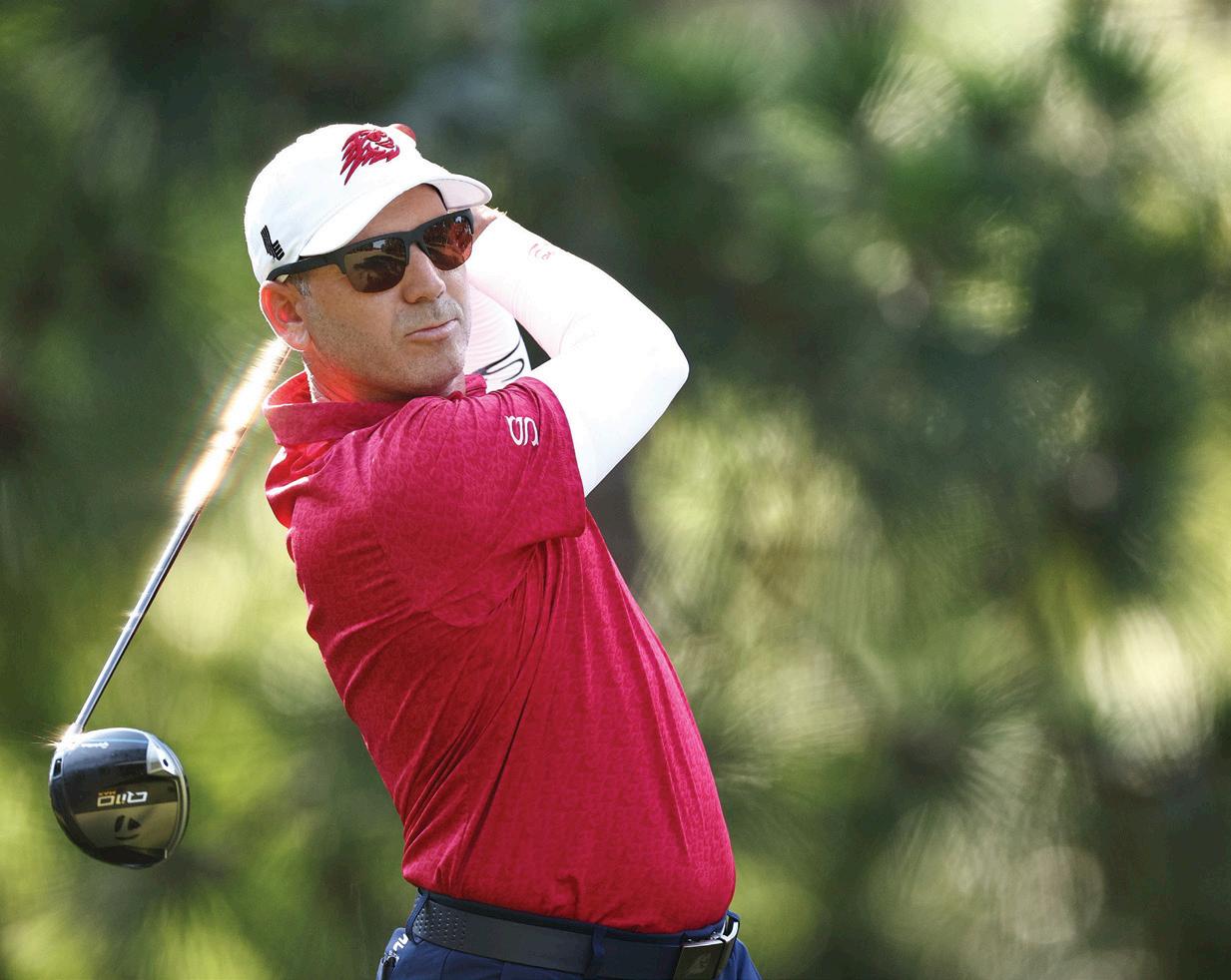
With the LIV Golf league entering their final quarter of the season, the 14-event season touches down on Spanish soil for LIV Golf Andalucía, tournament 10 on the roster.
Real Club Valderrama, originally recognised as Las Aves (Sotogrande New), was built in 1974 under the architectural guidance of Mr. Robert Trent Jones, Sr, a godfather among golf course architects.
In 1984, the golf course came under the ownership of Mr. Jaime Ortiz-Patiño, who embarked on a mission to elevate the course to an unprecedented level of excellence, setting a new benchmark for European golf.
Consistently ranked as the No. 1 course in Europe since the late 1980s, Valderrama has played host to some of golf’s biggest events.
Most notably, it was the site of the 32nd Ryder Cup won by Europe in 1997, and has also hosted two editions of the World Golf Championships (1999 and 2000), the Volvo Masters (1988-2009),
and in recent years, the Andalucía Masters, one of the most prestigious tournaments in Spain. While 12 months ago it was host to the inaugural LIV Golf Andalucía.
Both Smash GC’s Graeme McDowell (2010) and Fireballs GC skipper Sergio Garcia (2011, 2017-2018) have been victorious themselves at Valderrama as Sergio is primed to getting back on familiar territory.
July 12-14
Real Club
Valderrama
• Par 71
• Yards 6,993
Total Purse:
$20m - Individual
$5m - Team
Winner’s Share:
$4m - Individual
$3m - Team
“I’m looking forward to everything,” said Garcia. “The Spanish crowds, the Spanish people following us and cheering us on.
“It’s obviously a beautiful part of the world and a beautiful part of Spain so there is a lot of great things to look forward to.”
Located in Sotogrande, Southern Spain, the locals will also welcome fellow Fireballs Spanish team members in Eugenio Chacarra, winner of the 2022 LIV Golf Invitational Bangkok and 2023 St Andrews Bay Championship on the Asian Tour’s International Series, as well as David Puig, champion in the 2023 International
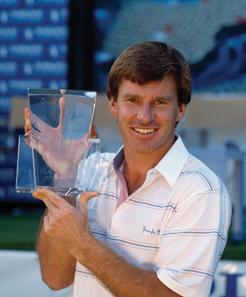
NICK FALDO
1988 Volvo Masters
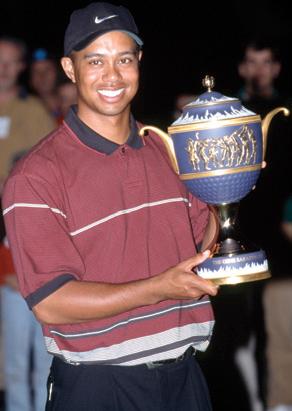

TIGER WOODS
GRAEME
MCDOWELL
2010 Andalucía
Valderrama Masters
TEAM EUROPE
1997 Ryder Cup
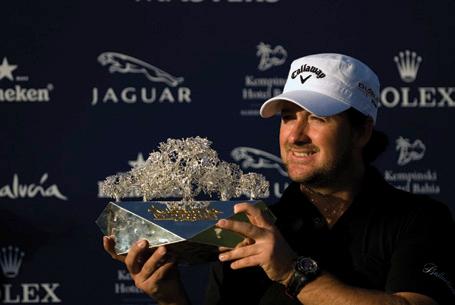
1999 WGC –American Express Championship

SERGIO GARCIA
2011, 2017 & 2018
Andalucía Valderrama Masters
Series Singapore and 2024 IRS Prima Malaysian Open.
With a handful of top five finishes so far this season on LIV, in 16 professional starts at Valderrama, Sergio has 15 top-10 finishes, including his three wins, not forgetting his three second-places. One of those was a playoff loss to Majestics GC Ian Poulter in 2004 at the Volvo Masters, as he goes in search of another trophy at “The Augusta of Europe.”
The 44-year-old is at the helm of guiding the Fireballs to

TALOR GOOCH
2023 LIV Golf
Andalucía
hopefully lift the coveted LIV Golf Andalucía title in his home country, supported by his youthful team mates.
“Even though I am the oldest and pretty much double their ages, you always learn from them.
“I not only try to help them, but at the same time you see some of the things they do and try to pick on those and it’s always fun to be a part of that and see the potential they have and see them develop.”
Wise words from mentor, sénior Garcia.
It might have taken Richard Bland 478 starts on the DP World Tour to claim his maiden victory at the Betfred British Masters, but since joining the LIV Golf League in 2022 the Englishman has had a second lease of life in his golfing career, and his trophy to starts ratio has massively improved!
Now aged 51, the Cleeks GC player was a pivotal part of his team’s success in claiming their hard earned silverware at LIV Golf Houston in May, a victory that had been knocking on the door prior.
“It was great to get the first win for the team at Houston a few weeks ago now,” said the Englishman. “We run at it in a close second in Singapore, so to back it up with a win was great.”
Bland came into the event at Golf Club of Houston off the back of his maiden major triumph at the KitchenAid Senior PGA Championship. A win that Bland was both delighted for but at the same time not neglecting the hard work his team mates of Martin Kaymer, Adrian Meronk and Kalle Samooja had put in for their final round heroics in Houston.
“The win at Harbor Shores was great, but that’s all forgotten about now. In golf as you know, it gets forgotten pretty quick once you are into the next week, it’s all focus on that.”
All that focus seemed to pay off!
“Obviously I’m super proud of what happened a few weeks ago, but I’m also super proud of these guys and there is definitely more to come from us.”
Blandy will continue to ride the crest of a wave as he hits his “home event” on the 2024 LIV Golf schedule as tournament 11 is situated on UK soil at the newly appointed JCB Golf and Country Club, a stone’s throw from the birth place of Bland.
“I was born up there, then we moved down to Southampton when I was two or three years old. If anyone asks where I’m from now I say Southampton, but Burton-on-Trent is on my passport though.
LIV GOLF UNITED KINGDOM BY JCB
July 26-28
JCB Golf and Country Club
• Par 72
• Yards 7,308
Total Purse:
$20m - Individual
$5m - Team
Winner’s Share:
$4m - Individual
$3m - Team
“But it still makes it extra special.
Whenever you play in front of your home crowd it’s always a little bit more special. When I used to play DP World Tour events, we always used to get amazing support and we have had that on LIV Golf at Centurion Club, so I’m sure it’s going to be the same at the JCB.”
Even though the JCB maybe a new golf course, in the grand scheme of things, it’s an ultra exclusive venue that comes with an abundance of firepower.
Depending on the weather, it might not be playing the longest, but it’s all about the quadrants on the greens because of the undulations. If you can control your golf ball and get it into the right spot on the green you will be able to give yourself a birdie chance. If you miss those spots, and the speed of the greens is up, it will make it tricky, so approach play is a premium.
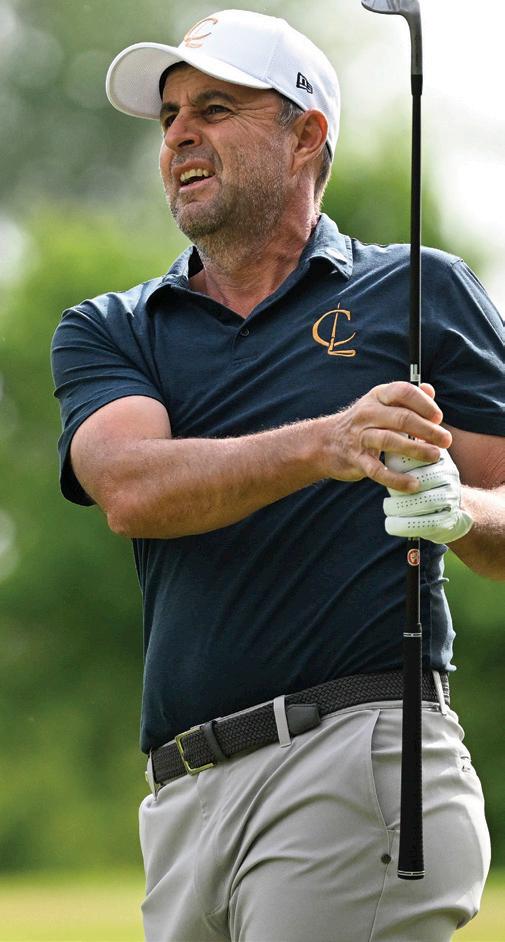
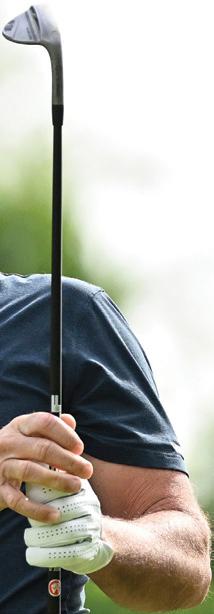

We y everything - Heavy-lifters, CineFPV, DJI, Helicopters and produce Drone Light Shows
We produce - Drone Light Shows and 3D Models for Digital Twins and Virtual Production



MAKE THE SKY YOUR CANVAS, BOOK US NOW



BY RANDY SMITH
GOLF DIGEST LEGEND OF GOLF INSTRUCTION

I WATCHED A 6-YEAR-OLD GROW UP TO BE WORLD NO. 1

Scottie has always gotten better under pressure. This is winning a “major” at 9 years old.

Few coaches have worked with players from elementary school through winning major championships. Randy Smith has done it twice—first with Justin Leonard and now as Scottie Scheffler’s coach of more than 20 years. They started together when Scheffler’s parents moved to Dallas and joined Royal Oaks Country Club, Smith’s home base since 1977. The precocious 6-year-old arrived to the Royal Oaks range in 2002 and grew in what was an almost perfect setting for a student with an insatiable appetite for improvement and competition. Here Smith, a Golf Digest Teaching Professional for more than 25 years and a member of the inaugural class of our Legends of Golf Instruction, as well as the winner of more national awards from the PGA of America than anyone in history—18 and counting—tells the story from his front-row seat, with exclusive images from his personal archive. —MATTHEW RUDY

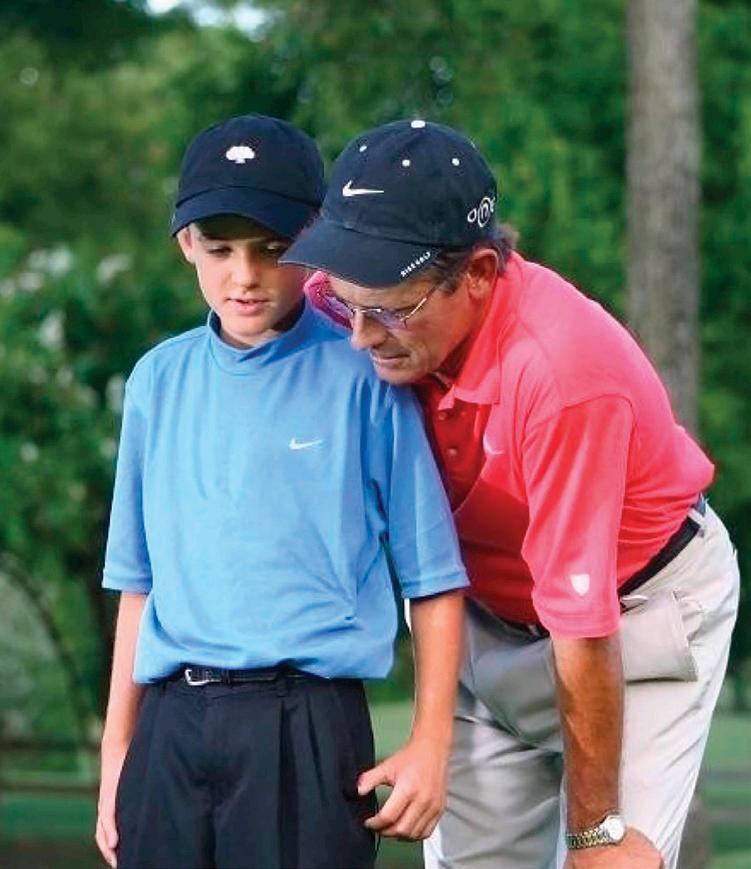
Scottie always pays attention.
That might have looked different when he was little bitty—and he was little bitty—but it’s a quality he has had from the beginning. We’ve been fortunate to have had a lot of good players around Royal Oaks through the years, and from almost the first day he was here, Scottie had this marvelous sense about him where he could read a situation and know when to keep his distance and when it was OK to move a little closer so that he could learn something from the tour players.
When Scottie was about 10 years old, I was working with Joel Edwards a bunch. Joel had won on the PGA Tour and Korn Ferry Tour, and he was in for some work on intermediate wedges. We’re grinding away, working on clipping the ball and changing trajectories for an 85-yard shot at a metal pole downrange. Scottie was sitting on the grass, cross-legged, watching us. Joel was doing great. He was really feeling better about his game, and you could feel the mood lighten. After a few more shots, Scottie had scooched closer, and he said, “Joel, are you trying to hit that pole?”
The last few shots had gone a foot past, a yard past, two feet to the right. These were great shots. Tour quality. Joel nodded to him, and Scottie said, “OK,” and shuffled off down the range line.
WHAT SEPARATES SCOTTIE IS HIS FIRE. IT’S THE LOVE OF PRACTICING AND EXPERIMENTING AND LEARNING THINGS ON HIS OWN. IT’S DETERMINATION.
We didn’t notice it at first, but he had gotten out his own wedge—it was a full shot for him—and started going after the same pole. On the third ball, he hit it. It went off like a gong, and we all look up.
Scottie is laughing, and he pulls another ball over and hits that one to a foot. He hit 10 more balls and hit the pole three more times.
Putting? Same thing. He was always on the periphery of the practice green, watching me work with Harrison Frazar or one of the other tour guys. One Saturday afternoon after Harrison and I got done, Scottie challenged him to a putting contest. They go for more than an hour, back and forth, and they’re tied. Harrison had to leave the next morning for an event, but Scottie harassed him until he agreed to show up the next morning on his way to the airport. Long story short? Harrison left for DFW at 9, upset because he let the kid con him into a sudden-death putting playoff—and lost.
SOAKING IT IN It didn’t matter if the lesson was for him (above) or tour player
Kris Cox (left), Scottie always had his ears open.
Why is this important? Because it speaks to the way Scottie thought about his game from the start. As Scottie’s soaking this all in, he’s not comparing himself to other 8-year-olds or other 10-year-olds. He’s comparing himself to a player on the Korn Ferry Tour, a PGA Tour winner or to the guy who just won the Open Championship.
You can have a great atmosphere for learning and all kinds of talent. You can be wide open for instruction and have a supportive family. I’ve coached plenty of players who have gone on to do great things with those elements in place. When you start talking about players who are good enough to make a living at the game, the separators get smaller and smaller. What separates Scottie is his fire. It’s not just competitiveness—though he has more of that than anyone I’ve ever coached. It’s the pure love of practicing and experimenting and learning things on your own. It’s determination.
When Scottie first started taking lessons, he was using clubs designed for junior players. They were fine for what they were, but Scottie hit so many balls that he broke the faces of these cast clubs that were not designed for that kind of relentless punishment right on the sweet spot. I was affiliated with Cleveland at the time, and they had their tour department make a full set of tour irons for Scottie but with little graphite shafts and some weight shaved from the heads so that they were in propor-


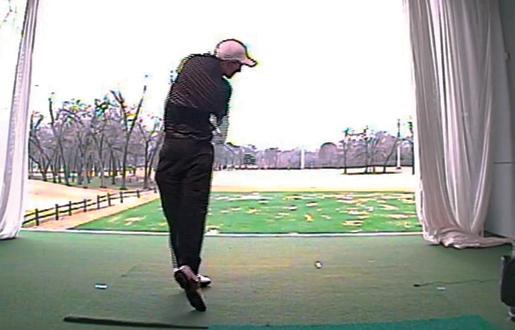
tion to the length. The wedges were real ones—a 56 and 60—and was he so proud of those.
His clubs might have just reached the bottom of his bag by the time he started playing in big events against fully-grown competitors. Scottie was 13 the year the Texas State Amateur was played at Royal Oaks, and he was paired with college players who were a foot taller, 50 yards longer—and carried those big-time college logo bags. Scottie was in it, too, hanging around the top 20, but when he got to the 16th hole, a 220-yard par-3, he hated the idea of having to hit driver when the college players were hitting 5-iron. I told him I’d be watching from next to the green and that he’d better pick the right club. Sure enough, the big headcover came off. But the hole was playing downwind, so Scottie took it 20 yards left of the green, almost over the


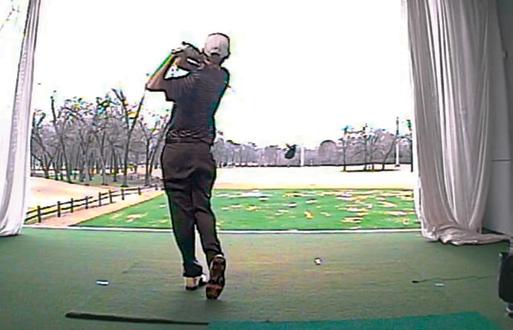
tree line, and hit a huge slice in there. It bounced off the fringe and rolled up to 12 feet, and he beat the college boys in his pairing.
Of course, he didn’t always hit the right shot, and he didn’t always win the tournament. It might not seem like it today with all the talk about Scottie being “boring.” Nobody wants to play better more than Scottie, and as a younger player, his temper would get the better of him, not where you would necessarily see it—and not directed at another competitor or any other person—but you wouldn’t want to be a locker or the carpet in front of it because he’d scorch it. He learned to channel that into the desire to work on whatever it was that let him down. It became positive fuel. Instead of being humiliated by losing, he wanted to show what he could do the next time.
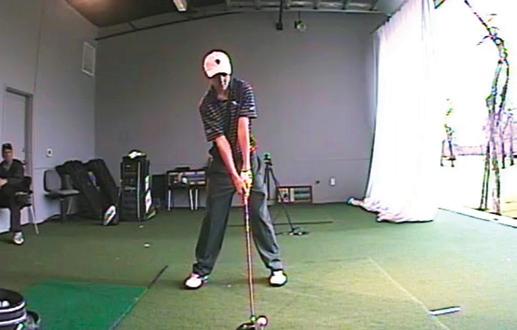


You can see how that has played out through the years. He’s so even now when he plays, which has served him well. When you’re the No. 1 player in the world, the spotlight gets only brighter, and Scottie was going through some things with his putter recently. But what seemed like a big deal to people on the outside was something he handled the same way he did when he had a stretch of bad driving like he did in college. It’s just another one of those things you go through when you play golf. You figure out what’s going on, and you do something to address it. The locker room has stayed safe. From a technical perspective, Scottie is so good today for the same reasons he was so good as a 5-foot high school freshman punching above his weight. His whole game is based on knowing where the clubface is. The only things we’ve ever



SCOTTIE’S WHOLE GAME IS BASED ON KNOWING WHERE THE CLUBFACE IS. THE ONLY THINGS WE’VE EVER DONE WITH HIS SWING HAVE BEEN WHAT WAS NEEDED TO KEEP THAT FEELING OF CLUBFACE AWARENESS IN PLACE.

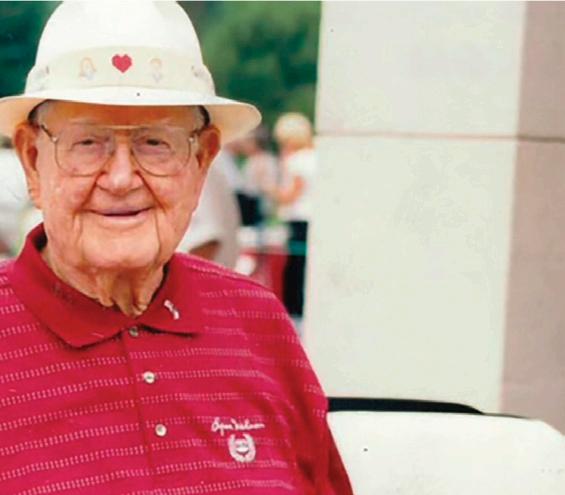

done with his swing have been what was needed to keep that feeling of clubface awareness in place— not “fix” things that other people think look less than traditional. No way in hell I was going to mold him into a swing I felt looked good. Every swing he has ever made was one that felt good to him. If you changed him to be by the book, so to speak, it wouldn’t be as exciting for him. It would put a damper on his creativity, the Let me see if I can hit this shot. His creativity is beyond anything I’ve ever witnessed. To this day, he can make “mistakes” in his swing all day long, but by the time he gets to impact, he has it corrected. When he has to make those corrections more than he likes, he asks questions, and it’s my job to help him navigate what it takes to get his feels back. At the Masters, it was his left hand position—a tiny adjustment that got his left thumb so that it was seated better in his right hand. That hardly sounds revolutionary, but it’s a big deal. It’s having the drive to improve, the courage to demand real critique and real answers and the maturity to commit to the process.
When you look at Scottie’s career trajectory—more than a hundred junior trophies, three straight high school individual titles, U.S. Junior Amateur champion, freshman of the year in college, Korn Ferry player of the year and now multiple major winner and World No. 1—it’s tempting to think it has been easy. Every player must fight through adversity, and Scottie is no different. What is different is his approach to the tough times. He embraces them and treats them in an almost matter-of-fact way—whether they’re physical or off-course.

In high school, the week before the state tournament, Scottie sprained his ankle playing basketball and was in a walking boot. Most players would withdraw. Scottie was at the range the day after the boot went on, saying, “OK, how do we hit shots in this thing?” We worked out how to hit a back-foot driver, and he walked and carried his bag to the state title. In college, he swiped a mesquite bush in a temper tantrum and buried a thorn deep in his thumb, to the bone. The doctors said it would require surgery to remove it.

He played with it. The trainers kept bringing him bags of ice, and he kept hitting great shots. Most of his college career he spent dealing with various nagging injuries and the aftermath of growing a foot and a half over the course of a few years.
The best round I’ve ever seen him play—and he has played a lot of great rounds—was at the PGA Championship this year. I was waiting for him on the range that Friday morning when all the crazy stuff with the police happened, and we had 53 minutes to get ready. I told him it was all about his head, and he knew how to handle it, and he did. To go out there and use the adrenaline and harness the adversity to fuel his competitive fire and shoot 66? I was proud of how he played, and more importantly, how he handled it all. He understood what was happening, he appreciated the people who were trying to help him, and the guy you saw talking about it afterward is the person he really is.
No matter the situation, he’s always himself.
NOW I’M LEARNING MORE FROM HIM THAN HE IS FROM ME. JUST HIS CURIOSITY WITH HIS HANDS AND MAKING THE BALL DO WHAT HE WANTS IS INCREDIBLE. HE HAS A LOT BIGGER LIBRARY NOW.

The five holes that will decide the Open Championship
BY DEREK DUNCAN

The opening and closing holes at
are peaceful compared to the turbulence that comes between.
Royal Troon Golf Club in Scotland, host of the 152nd Open Championship, is exactly what we envision links golf to be, an out-and-back stroll across a sublime crescent of tousled nature, one dune in from the sea, the rumpled turf dogtrotting through buckshot patterns of stern and sod-faced pot bunkers. It’s also not quite what we envision, a droll march over bland and barren regions of flattish fairway, a dead-end turn at a holiday park (what in the United States we call a trailer park) and airplanes strafing play from nearby runways. When Open Championships are played at Troon, which has happened nine previous times since 1923, the links can extract the best from titans like Bobby Locke, Arnold Palmer and Tom Watson. Troon is also capable of producing clunkers like Arthur Havers and Todd Hamilton. The nine-out, ninein routing guarantees Troon will be a tale of two courses: If the wind is at the back one direction, it’s in the face the other; off the firth on the right going out, it’s from the left coming home. Shaped shots and a mastery of trajectory are necessary to play well. These are the five holes that will have the greatest impact on the Open Championship.


HOLE 8 / 123 YARDS / PAR 3
The first five and a half holes plunge straight ahead over bumpy but level ground along the Firth of Clyde with clear-day views across the water of Ailsa Craig before veering left at the seventh into higher dunes. The game at Troon doesn’t really begin until the round reaches the sandhills, specifically the par-3 eighth Postage Stamp, one of golf’s most famous holes. It plays from an exposed, 20-foot-high dune ridge across a valley to a narrow fingernail of green surrounded by five deep bunkers awaiting shots that will teeter off the crested edges. On a calm day it’s a sand wedge for Open contestants, but those days are rare, and in strong head or crosswinds it’s Troon’s most dangerous shot.
At Troon, you need to steal as much as you can going out because you’re going to spend it, and more, coming in. After reaching the southeasternmost point of the property near the holiday park, the 10th turns in the other direction and begins the long odyssey back, typically into the wind. The drive is blind over the eponymous sandhills, and long hitters can try to cheat the hole by cutting off more of the dune on the left, though balls running through the fairway will find a series of hollows, leaving long, blind approaches into a green benched into another tall dune. There are no bunkers on the hole, but the right front of the green falls steeply away and will repel any miscalculated approach.


11 / 498 YARDS / PAR 4
The expansion of golf across Scotland in the 19th century follows almost one-to-one the expansion of the country’s rail lines, as courses were frequently developed near transit stops and population centers. As the name suggests, the defining feature of Troon’s 11th is the out-of-bounds rail line that borders the fairway and green on the right. Impenetrable gorse bushes form the opposite boundary, making this the course’s leanest fairway. Facing another blind tee shot, drives that carry the furthest expanse of gorse to challenge the right side will earn the best angle to the green, though each shot is exacerbated by either headwinds or crosswinds off the sea bringing O.B. into play. Among the most difficult holes in Open golf, the 11th plays as a par 4½ and in 1997 and 2016 had the highest stroke average in relation to par the professionals played all year.
The final four holes at Troon are an endurance test as the course has tapered away from the up and down of the sandhills into a string of long, low holes that chug relentlessly toward the finish through wind and the open plain. A quartet of staggered pot bunkers that can extract full-stroke penalties do the work that blind drives and deep hollows did previously, making players think hard about landing spots and run outs. They should try to find the left side of the fairway from where approaches can be run onto the partially obscured green set in a small punchbowl of hummocks, perhaps setting up a similar 50-foot putt to the one Henrik Stenson jarred in 2016 to pull two shots ahead of a stunned Phil Mickelson in one of the Open’s great duels for the ages.















The hole is called “Rabbit,” and players need to pull one out of their hats to hit this green in regulation. Only an arrowstraight shot will accomplish this, something complicated by the usual howling winds and the additional 22 yards of length since 2016. Looming above four nearby bunkers, the green is a naked pedestal that repels o ine approaches, including into an unpopular pit of perdition o the right edge. Rabbit has a way of biting players at the worst time. Ernie Els was tied with Todd Hamilton in their 2004 playo before overshooting 17 and taking a 4, losing what would have been a third Open title. In the 1997 Open, Jesper Parnevik missed a short birdie putt on 16 to tie Justin Leonard, then toe-hooked his tee shot on 17 and made bogey, ending his hopes. Leader Nick Price was already melting away down the stretch in the 1982 Open, but it was his bogey at 17 that finally gave Tom Watson, who was waiting in the clubhouse, the one-stroke winning margin.





“Brian Harman isn’t a player that has negative thoughts, he is just waiting for the positive thought before he pulls the trigger.”
I’ve been working with Brian at Sea Island Resort in Georgia now since the spring of 2019, under the guidance of the late great Jack Lumpkin. Jack was actually Claude Harmon’s assistant and he used to babysit for Butch Harmon when he was a kid.
So Jack was the one who actually started coaching Brian when he was only 11-years-old, and since Jack’s passing two years ago. I have taken over the reins with Brian.
These days, it’s a very standard tournament warm-up now for Brian.
Brian always loosens up with a few wedge shots and then he moves into a Delayed Strike Trainer (DST) club which is a bendy golf club.
For those of you which haven’t used that, if you are a right-handed golf for example who would draw the golf ball a lot – the DST would make you feel like you are getting on top of the golf ball a little bit more.
Which for Brian, really helps him get into a more powerful set up position with his lead hand and lead shoulder,
The more he can get into those processes, the more he has noticed that transfer onto the golf course.
By Justin Parsons
which we are working on. It really helps him with his movement, and helps him with a couple of fundamental things.
Then he progresses to the ball be tween his arms, The Tour Striker Smart Ball. Brian has always had an early set in his takeaway, and this ball really tends to soften it out a little bit.
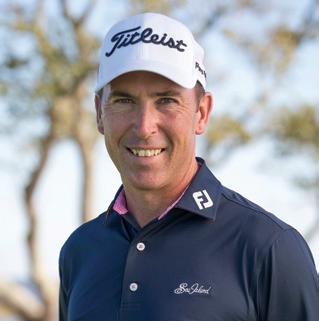
We aren’t trying to change his early set completely, just soften it a little bit so then he can make some more of a body orientated golf swing.
He then will progresses to aligning his ball position, making sure that he is exactly where he needs to be in relation to the target and where the ball would be in his stance.
As you can see, he will still flick back and forth between a few of the drills until he feels comfortable.
It’s then he would head into hitting shots with his pre full shot routine, which is something he is working on as we have seen him take his time while he is over the golf ball. He isn’t a player that has negative thoughts, he is just waiting for the positive thought before he pulls the trigger.
The more he can get into those processes, the more he has noticed that transfer onto the golf course.
Even on the Friday afternoon of the Open Championship last year he said to me, “It strikes me that if I just keep to my process, maybe I will be ok this weekend.” I said to him “Yeah, I’m pretty sure you will be ok.”
Thankfully he was!

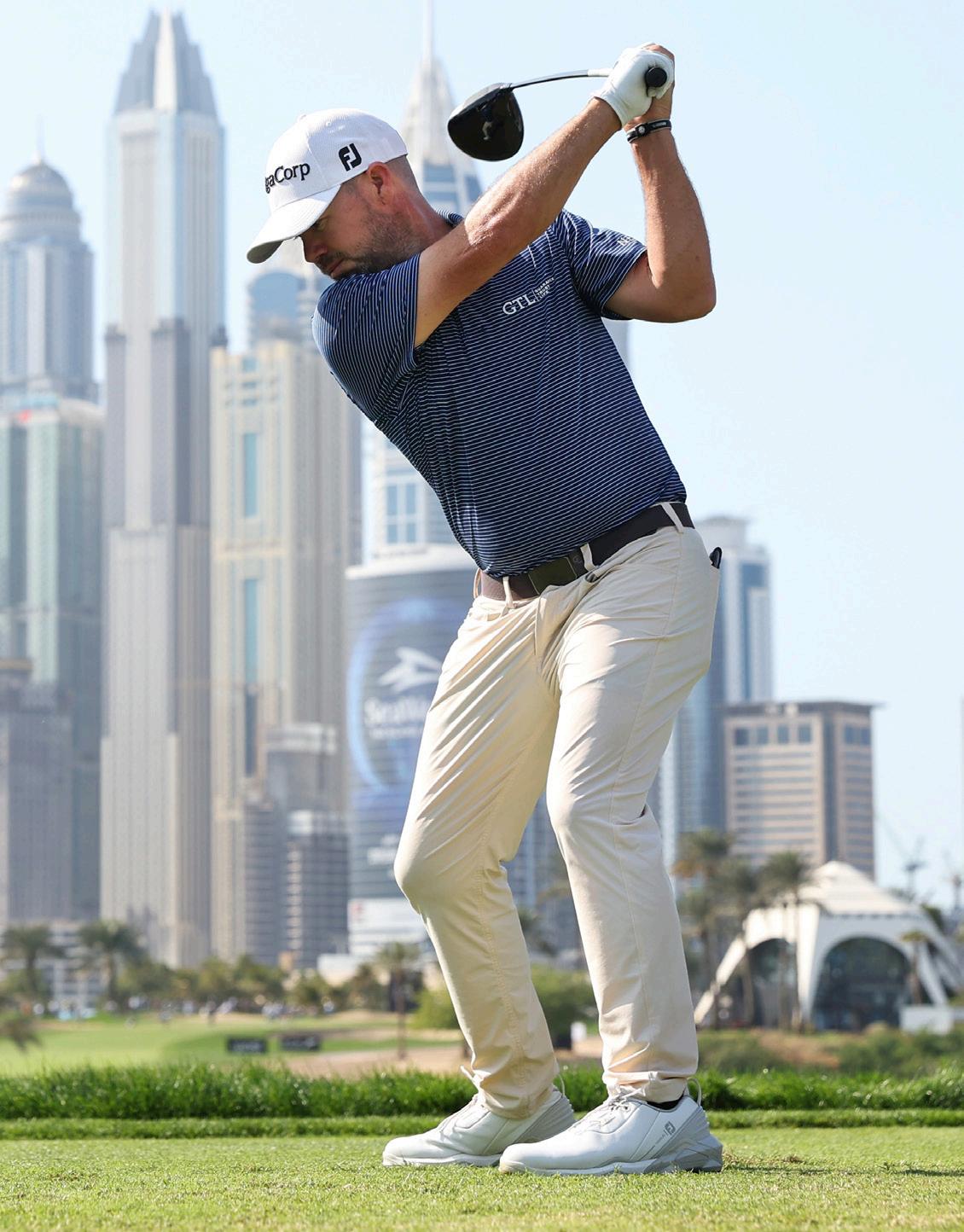
WORLD’S 100 GREATEST GOLF COURSES
2024-2025

OUR NEWEST BIENNIAL RANKING CELEBRATES THE VIRTUES OF SAND AND SEA
BY DEREK DUNCAN


HE MOST IMPORTANT DEVELOPMENT IN golf-course architecture during the past 20 years is the elevation of sand-based sites. Encouraged by the success of destinations like Bandon Dunes, developers have spent this time scouring the globe for sandy, dunes-like properties on which to construct new courses and lure golfers, several of which make their debut on the Golf Digest 2024-2025 World’s 100 Greatest Courses, our ranking of courses outside the United States.
This is nothing new. The first golf courses—the links of Scotland, England, Ireland and Wales—were born from sand. Early golfers forged their way through the gorsed and grassy landscapes of dunes, kettles, eskers and seaside plains, chasing their balls while developing holes, which over time became fully realised courses. Advancements in construction methods throughout the 20th century enabled courses to be built anywhere on any type of land, negating the need for pure natural movements, but sand—near a coast or not—remains the medium that produces golf that most resembles the game as it was conceived.
This year’s ranking reflects a reappraisal of the virtues of sand and, more specifically, links golf. In the 2022-2023 World’s 100 Greatest Courses ranking, 40 courses that could be classified as links were represented (defined here as coastal courses built on mostly sandy linksland). This year that number is 54. This does not count the numerous inland courses built on sand, including those in the Melbourne Sand Belt region, highlighted by Royal Melbourne’s West Course, ranked fifth, or the heathland courses southwest of London, topped by Sunningdale’s Old Course at No. 12.
RUB O’ THE GREEN
Patrick’s Links at Rosapenna (Ireland)

Just as important as quantity in demonstrating the appreciation for sand is the upward movement of links courses in the rankings. Nine of the top 10 courses are links, up from six in 20222023. Links courses, in fact, jumped a collective 351 places in the poll, marked most notably by Trump International surging 33 places, followed by Cruden Bay (30 places), Prestwick (28), Portmarnock (Championship) and Royal Troon (25 each) and Kingsbarns (24). Links stalwarts like Royal Hague (No. 48), designed in 1939 by Charles Alison, Royal St. David’s in Wales (No. 76), Enniscrone in Ireland (No. 87) and Paraparaumu Beach in New Zealand (No. 96) enter or reenter the ranking. “Secondary” courses at established clubs also get love, with Turnberry, Portrush, St. Andrews and several others placing two courses on the list for the first time.
Golf Digest surveyed hundreds of domestic and international course-ranking panelists to determine this year’s World’s 100 Greatest Golf Courses outside the United States. Here are the results.
1. (1) ROYAL COUNTY DOWN G.C. (CHAMPIONSHIP)
Newcastle, Northern Ireland
Old Tom Morris (1889), Donald Steel (remodeled, 1998)
7,206 yards, par 71
2. (3) ROYAL DORNOCH G.C. (CHAMPIONSHIP)
Scotland
Old Tom Morris (1892), George Duncan (1947), Donald Steel (1993), Tom Mackenzie (2013)
6,799 yards, par 70
3. (9) THE OLD COURSE AT ST. ANDREWS
Fife, Scotland
Allan Robertson (1848), Old Tom Morris (1865-’85), Martin Hawtree (2013-’14; ’20)
7,313 yards, par 72
4. (8) ROYAL PORTRUSH G.C. (DUNLUCE)
Northern Ireland
Tom Gilroy (9, 1888), Old Tom Morris (9, 1889), H.S. Colt (1933), Martin Ebert (2015)
7,317 yards, par 72
5. (4) ROYAL MELBOURNE G.C. (WEST)
Black Rock, Australia
Alister MacKenzie, Alex Russell (1931), Tom Doak (2015-’16)
6,645 yards, par 72
6. (7) MUIRFIELD
Gullane, Scotland
Old Tom Morris (1891), H.S. Colt (1925), Martin Hawtree (2011)
7,245 yards, par 71
7. (2) TARA ITI G.C.
Mangawhai, New Zealand
Tom Doak (2015)
6,951 yards, par 71
Score: 8.63
8. (13) TRUMP TURNBERRY RESORT (AILSA) Scotland
P.M. Ross (1951), Martin Ebert (2015)
7,489 yards, par 71
9. (23) NORTH BERWICK G.C.
Scotland
David Strath (1877), C.K. Hutchison (1935)
6,551 yards, par 71
10. (18) BALLYBUNION G.C. (OLD)
Ireland
Lionel Hewson (9, 1906), Reginald Beale (9, 1927), Tom Simpson (1937), Martin Hawtree (2011), Graeme Webster (2015)
6,802 yards, par 71
11. (11) KINGSTON HEATH G.C. Heatherton, Australia
Des Soutar, Mick Morcom (1925), Mike Clayton (2002) 7,102 yards, par 72
12. (15) SUNNINGDALE G.C. (OLD)
England
Willie Park Jr. (1901), H.S. Colt (1922), Donald Steel (1986)
6,666 yards, par 70
13. (10) CABOT CLIFFS
Inverness, Nova Scotia, Canada
Bill Coore and Ben Crenshaw (2015) 6,835 yards, par 72
14. (12) CAPE WICKHAM LINKS
King Island, Australia
Mike DeVries, Darius Oliver (2015) 6,725 yards, par 72
15. (21) CAPE KIDNAPPERS G. CSE. Hawke’s Bay, New Zealand
Tom Doak (2004)
7,143 yards, par 71
16. (24) CARNOUSTIE G. LINKS (CHAMPIONSHIP)
Scotland
Allan Robertson (1838), Old Tom Morris (1895), James Wright (1931), Martin Hawtree (2006), Martin Ebert (2016) 7,421 yards, par 71
17. (5) MORFONTAINE G.C.
France
Tom Simpson (1927), Kyle Phillips (2004) 6,584 yards, par 70
18. (19) ROYAL MELBOURNE G.C. (EAST) Black Rock, Australia
Alex Russell (1932), Tom Doak (2012) 6,579 yards, par 71
19. (17) ROYAL BIRKDALE G.C. Southport, England
George Lowe (1897), F.G. Hawtree, J.H. Taylor (1931), Fred W. Hawtree (1974-’85), Martin Hawtree (2010) 7,156 yards, par 70
20. (30) ROYAL ST. GEORGE’S G.C. Sandwich, England
W. Laidlaw Purves (1887), H.S. Colt (1914), Martin Ebert (2010) 7,204 yards, par 70
21. (51) CRUDEN BAY G.C.
Scotland
Old Tom Morris, Archie Simpson (1899), Tom Simpson (1926), Tom Mackenzie (2015) 6,615 yards, par 70
22. (46) KINGSBARNS G. LINKS
St. Andrews, Scotland
Kyle Phillips, Mark Parsinen (1999) 7,224 yards, par 72
23. (14) NEW SOUTH WALES G.C. La Perouse, Australia
Des Soutar, Carnegie Clark, Alister MacKenzie (1928), Eric Apperly (1936), Greg Norman (2010), Tom Doak
6,829 yards, par 72

CATAPULT
Scotland’s quirky Cruden Bay makes the second-biggest jump, moving up 30 places.
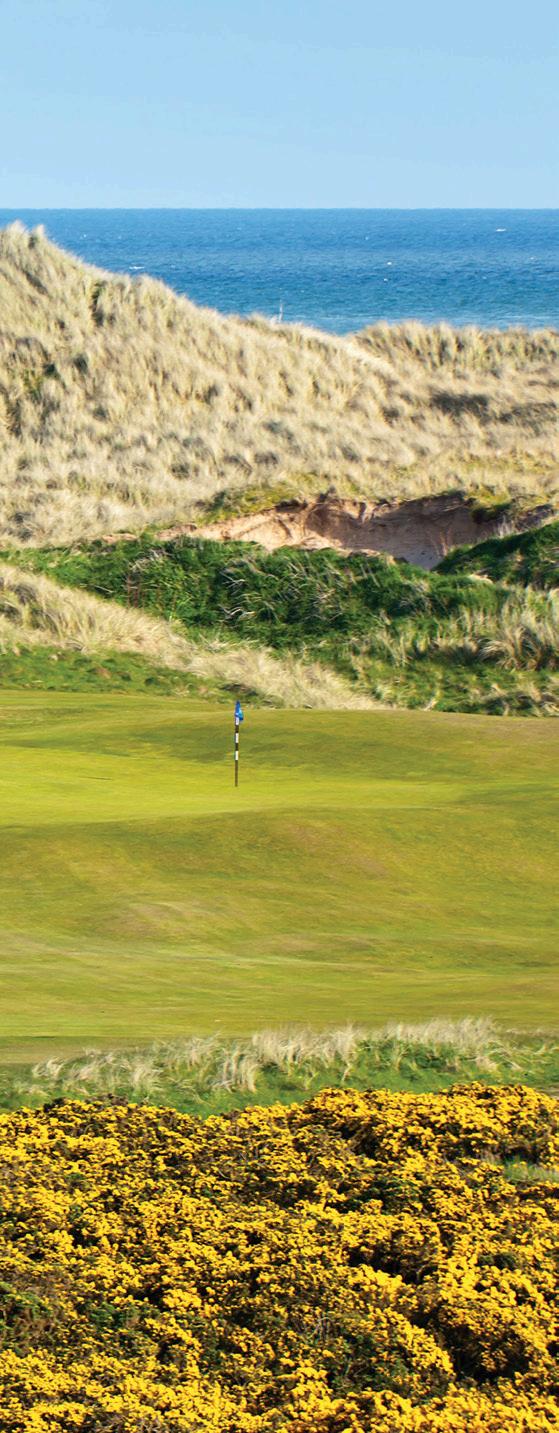
24. (44) LOFOTEN LINKS
Gimsøysand, Norway
Jeremy Turner (2015) 6,687 yards, par 71
25. (39) CABOT LINKS
Inverness, Nova Scotia, Canada
Rod Whitman (2013) 6,860 yards, par 70
26. (6) HIRONO G.C. Hyogo, Japan
C.H. Alison (1932), Martin Ebert (2018-’19) 7,169 yards, par 72
27. (41) LAHINCH G.C. (OLD) Ireland
Old Tom Morris (1894), Alister MacKenzie (1928), Martin Hawtree (2003) 6,950 yards, par 72
28. (53) ROYAL TROON G.C. (OLD) Scotland
Charles Hunter (1878), George Strath (1881), Willie Fernie (1909), Martin Ebert (2014)
7,385 yards, par 71
29. (29) VALDERRAMA G.C. Sotogrande, Spain
Robert Trent Jones (1975), Kyle Phillips (2012) 6,990 yards, par 71
30. (16) BARNBOUGLE DUNES Bridport, Australia
Tom Doak, Mike Clayton (2004) 6,724 yards, par 71
31. (57) VICTORIA G.C. Melbourne, Australia
William Meader, Oscar Damman (1927), Alister MacKenzie (1927), Mike Clayton, Geoff Ogilvy, Mike Cocking (2015) 6,888 yards, par 72
32. (25) SWINLEY FOREST G.C. Ascot, England
H.S. Colt (1911), Frank Pont (2012) 6,431 yards, par 69
33. (48) ROYAL LYTHAM & ST. ANNES G.C. England
George Lowe (1897), H.S. Colt (1923), Martin Ebert (2010) 7,118 yards, par 70
34. (T-67) TRUMP INTERNATIONAL G. LINKS
Balmedie, Scotland
Martin Hawtree (2011) 7,428 yards, par 72
35. (43) SUNNINGDALE G.C. (NEW) England
H.S. Colt (1923), Martin Hawtree (2010) 6,729 yards, par 70
36. (NR) TE ARAI LINKS (NORTH) Tomarata, New Zealand
Tom Doak (2023) 6,931 yards, par 71
37. (T-62) PORTMARNOCK G.C. (CHAMPIONSHIP)
Ireland
W.C. Pickeman, George Ross, Mungo Park (1895), Martin Hawtree (2000-’04) 7,365 yards, par 72
38. (32) ST. GEORGE’S G. AND C.C. Etobicoke, Ontario, Canada
Stanley Thompson (1930), Tom Doak, Ian Andrew (2015) 7,014 yards, par 71
39. (37) BARNBOUGLE LOST FARM Bridport, Australia
Bill Coore and Ben Crenshaw (2010) 6,849 yards, par 72
40. (NR) TE ARAI LINKS (SOUTH) Tomarata, New Zealand
Bill Coore and Ben Crenshaw (2022) 6,843 yards, par 72
41. (49) PUNTA ESPADA G. CSE. Cap Cana, Dominican Republic
Jack Nicklaus (2006) 7,396 yards, par 72
42 (58) METROPOLITAN G.C. Melbourne, Australia
J.B. Mackenzie (1908), Alister MacKenzie (1926), Neil Crafter, Paul Mogford (2016) 7,066 yards, par 72
43. (45) ROYAL PORTHCAWL G.C. Wales
Ramsay Hunter (1898), H.S. Colt (1919), Martin Ebert (2011) 7,152 yards, par 72
44. (52) HAMILTON G. AND C.C. (WEST/ SOUTH)
Ancaster, Ontario, Canada
H.S. Colt and Charles Alison (1915), Tom Clark (1999-2005), Martin Ebert (2021) 6,928 yards, par 70
45. (75) JASPER PARK LODGE G.C. Jasper, Alberta, Canada
Stanley Thompson (1925), W.H. Brinkworth (1948) 6,663 yards, par 71
46. (83) MEMPHRÉMAGOG G.C. Magog, Quebec, Canada
Thomas McBroom (2008) 7,498 yards, par 72
47. (50) DIAMANTE G.C. (DUNES) Cabo San Lucas, Mexico
Davis Love III (2010) 7,160 yards, par 72
48 (NR) KONINKLIJKE HAAGSCHE (ROYAL HAGUE G. & C.C.)
Wassenaar, Netherlands
C.H. Alison (1939), Guy Campbell (1947), Frank Pont (2007) 6,847 yards, par 72
49. (NR) ST. PATRICK’S LINKS Rosapenna, Ireland
Tom Doak (2021) 6,930 yards, par 71
50. (42) KAWANA HOTEL G. CSE. (FUJI)
Shizuoka, Japan
C.H. Alison (1936)
6,691 yards, par 72
51. (72) CASTLE STUART G. LINKS
Inverness, Scotland
Gil Hanse, Mark Parsinen (2009)
7,009 yards, par 72
52. (64) MACHRIHANISH G.C.
Campbeltown, Scotland
Charles Hunter (1876), Sir Guy Campbell (1948) 6,462 yards, par 70
53. (60) WATERVILLE G. LINKS
Ireland
Eddie Hackett (1972), Tom Fazio (2003) 7,355 yards, par 72
54. (20) CASA DE CAMPO (TEETH OF THE DOG)
La Romana, Dominican Republic
Pete Dye (1971)
7,471 yards, par 72
55. (26) KAURI CLIFFS
Matauri Bay, New Zealand
David Harman (2000)
7,151 yards, par 72
56. (59) ROYAL ABERDEEN G.C. (BALGOWNIE)
Scotland
Robert Simpson and Archie Simpson (1888), James Braid (1925), Martin Hawtree (2011) 6,916 yards, par 71
57. (T-67) WOODHALL SPA G.C. (HOTCHKIN)
Lincolnshire, England
Harry Vardon (9, 1905), H.S. Colt (9, 1912), S.V. Hotchkin, Sir Guy Campbell (1926), Tom Doak (2018)
7,080 yards, par 73
58. (76) CAPILANO G. & C.C.
West Vancouver, British Columbia, Canada
Stanley Thompson (1937), Doug Carrick (2016) 6,706 yards, par 70
59. (40) UTRECHT GOLFCLUB DE PAN Utrecht, Netherlands
H.S. Colt (1929 first nine, 1932 second nine)
6,668 yards, par 72
60. (88) BANFF SPRINGS G. CSE. (THOMPSON)
Banff, Alberta, Canada
Stanley Thompson (1929), Les Furber (1999)
6,938 yards, par 71
61. (89) PRESTWICK G.C.
Ayrshire, Scotland
Old Tom Morris (12, 1851), Charles Hunter (6, 1883)
6,908 yards, par 71
62. (38) SHANQIN BAY G.C.
Hainan Island, China
Bill Coore and Ben Crenshaw (2012)
6,882 yards, par 71
63. (T-77) ROYAL LIVERPOOL G.C.
Hoylake, England
Robert Chambers, George Morris (1871), H.S. Colt (1920), Martin Hawtree (2010), Martin Ebert (2020) 7,383 yards, par 72
64. (33) MID OCEAN CLUB
Tucker’s Town, Bermuda
C.B. Macdonald, Seth Raynor (1923), Tom Doak (2014-’15) 6,548 yards, par 71
65. (47) LEOPARD CREEK C.C.
Malelane, South Africa
Gary Player, Phil Jacobs (1997), Ernie Els, Greg Letsche (2007) 7,288 yards, par 72
66. (27) MONTE REI G. & C.C.
Vila Nova de Cacela, Portugal
Jack Nicklaus (2007) 7,182 yards, par 72
67. (56) LOCH LOMOND G.C. Luss, Scotland
Jay Morrish, Tom Weiskopf (1992) 7,100 yards, par 71
68. (65) THE BLUFFS HO TRAM STRIP
Ho Tram, Vietnam
Greg Norman (2014) 7,007 yards, par 71
69. (NR) WALTON HEATH G.C. (OLD) Walton-on-the-Hill, England
Herbert Fowler (1904) 7,406 yards, par 72
70. (82) ST. ENODOC G.C. (CHURCH)
North Cornwall, England
James Braid (1907 and 1937), Tom Simpson (1930), Peter McEvoy (2004) 6,557 yards, par 69
71. (34) YAS LINKS, ABU DHABI
Abu Dhabi, United Arab Emirates
Kyle Phillips (2010) 7,414 yards, par 72
72. (NR) SOUTH CAPE OWNERS CLUB Gyeongsangnam-do, South Korea
Kyle Phillips (2013) 6,685 yards, par 72
73. (T-62) JACK’S POINT G. CSE
Queenstown, New Zealand
John Darby (2008) 6,986 yards, par 72
74. (NR) REAL CLUB DE GOLF SOTOGRANDE Spain
Robert Trent Jones (1964), Roger Rulewich (2016) 7,591 yards, par 72
75. (84) JACK NICKLAUS G.C.
Incheon City, South Korea
Jack Nicklaus (2009) 7,470 yards, par 72
TEMPTATION ISLAND
This year’s ranking celebrates sublime coastal courses like Cape Wickham on Australia’s King Island.

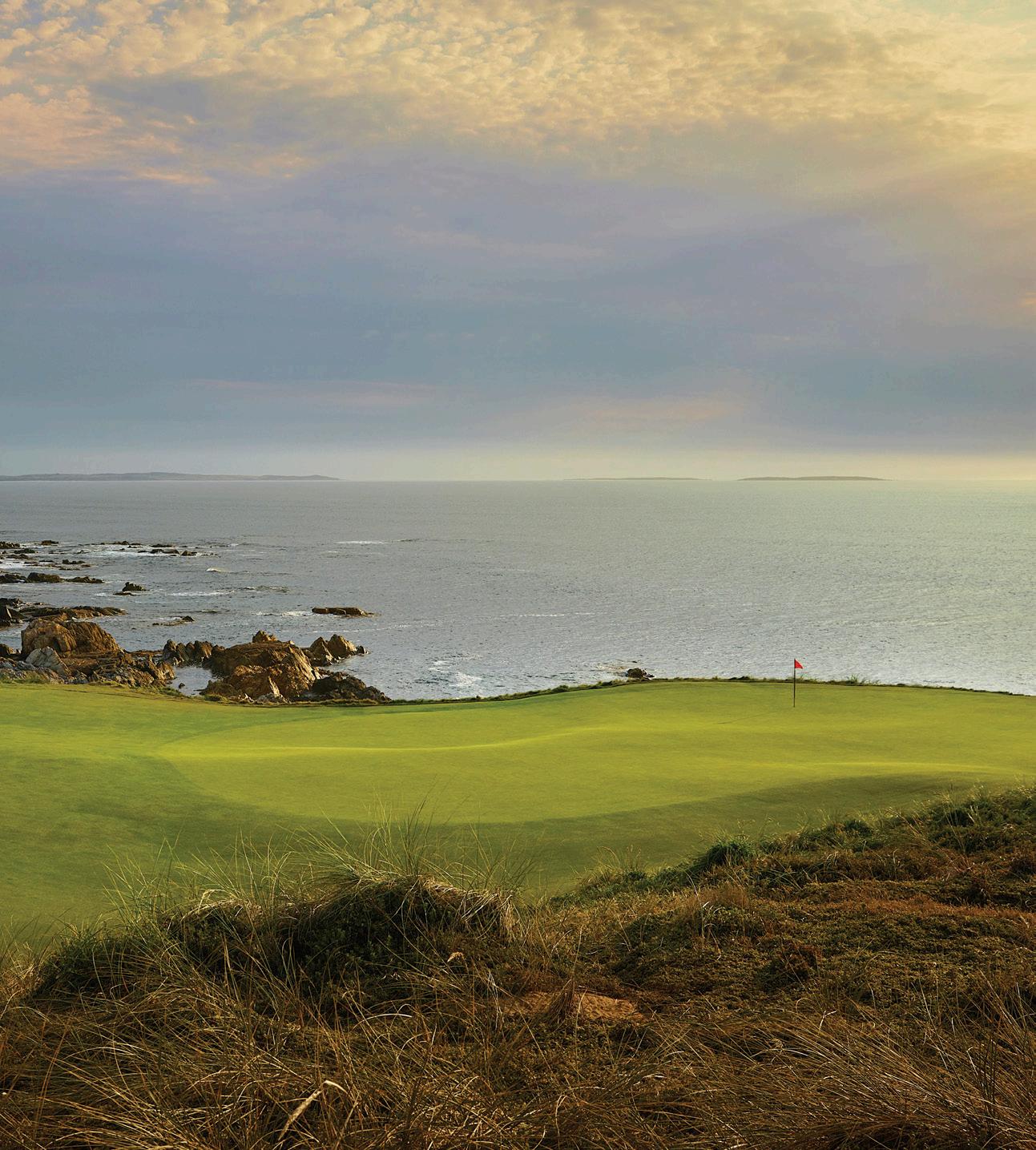


76. (NR) ROYAL ST. DAVID’S G.C.
Harlech, Wales
William More and Harold Finch-Hatton (1894), Fred Hawtree (1960), Martin Ebert and Tom Mackenzie (2008)
6,629 yards, par 69
77. (85) OLD HEAD OF KINSALE
County Cork, Ireland
Ron Kirby, Eddie Hackett, Paddy Merrigan, Joe Carr (1996), Ron Kirby (2013)
7,159 yards, par 72
78. (98) WESTERN GAILES G.C.
Scotland
Willie Fernie (1897), Fred W. Hawtree (1975)
7,014 yards, par 71
79. (81) ROYAL CINQUE PORTS G.C.
Deal, Kent, England
Tom Dunn (1895), Sir Guy Campbell (1949), Martin Ebert (2007)
7,367 yards, par 72
80. (97) THE DURBAN C.C.
South Africa
Laurie Waters and George Waterman (1920), S.V. Hotchkin (1928), Bob Grimsdell (1959)
7,064 yards, par 72
81. (54) RYE G.C. (OLD)
England
Douglas Rolland, H.S. Colt (1894), Sir Guy Campbell (1959)
6,308 yards, par 68
82. (NR) ROYAL PORTRUSH G.C. (VALLEY)
Northern Ireland
H.S. Colt (1929), Martin Ebert and Tom Mackenzie (2015)
6,346 yards, par 70
83. (35) NARUO G.C.
Inagawa, Hyogo, Japan
Rokuro Akaboshi, Shiro Akaboshi (1929), C.H. Alison (1930), Harry C. Crane (1948)
6,564 yards, par 70
84. (22) NATIONAL G.C. OF CANADA Woodbridge, Ontario
George Fazio, Tom Fazio (1974), Tom Fazio (2005)
7,235 yards, par 72
85. (71) GANTON G.C. Yorkshire, England
Tom Chisholm, Robert Bird (1891) 7,055 yards, par 71
86. (94) CAPE BRETON HIGHLANDS LINKS
Ingonish Beach, Nova Scotia, Canada
Stanley Thompson (1941), Ian Andrew (2011)
6,592 yards, par 72
87. (NR) ENNISCRONE G.C. (THE DUNES)
Ireland
Eddie Hackett (1970), Donald Steel (2001) 7,029 yards, par 73
88. (91) COUNTY SLIGO G.C.—ROSSES
POINT (COLT COURSE)
Ireland
H.S. Colt (1927), Eddie Hackett (1983), Pat Ruddy (2014)
7,259 yards, par 71
89 (NR) TRALEE G.C.
Barrow, Ireland
Arnold Palmer and Ed Seay (1984) 6,975 yards, par 72
90. (93) THE EUROPEAN CLUB
Brittas Bay, County Wicklow, Ireland
Pat Ruddy (1992, 2000-’11) 7,377 yards, par 71
91. (NR) ST. ANDREWS LINKS (NEW)
Scotland
Tom Morris (1895), Martin Ebert and Tom Mackenzie (2016) 6,517 yards, par 71
92. (NR) PORTSTEWART G.C. (STRAND)
Northern Ireland
Willie Park, Jr. (1920), Des Giffin (1988) 7,030 yards, par 71
93. (NR) WALTON HEATH G.C. (NEW) Walton-on-the-Hill, England
Herbert Fowler (1913) 7,199 yards, par 72
94. (NR) TRUMP TURNBERRY RESORT (KING ROBERT THE BRUCE)
Scotland
Willie Fernie (1901), P.M. Ross (1951), Donald Steel (2001), Martin Ebert (2017) 7,203 yards, par 72
95. (NR) THE NAIRN G.C. (CHAMPIONSHIP)
Scotland
Archie Simpson (1887), Tom Morris (1889), James Braid (1926), Martin Ebert and Tom Mackenzie (2019) 6,832 yards, par 71
96. (NR) PARAPARAUMU BEACH G.C.
New Zealand
Alex Russell (1949) 6,640 yards, par 71
97. (74) SHESHAN INTERNATIONAL G.C. Shanghai, China
Neil Haworth, Robin Nelson (2004) 7,199 yards, par 72
98. (NR) AMATA SPRING C.C. Chon Buri, Thailand
Lee Schmidt (2005) 7,505 yards, par 72
99. (61) TOKYO G.C. Sayama City, Saitama Prefecture, Japan
Komei Ohtani (1939), Gil Hanse (2010-’18) 6,915 yards par 72
100. (NR) CABO DEL SOL (COVE CLUB, formerly OCEAN COURSE)
Mexico
Jack Nicklaus (1994) 7.157 yards, par 72
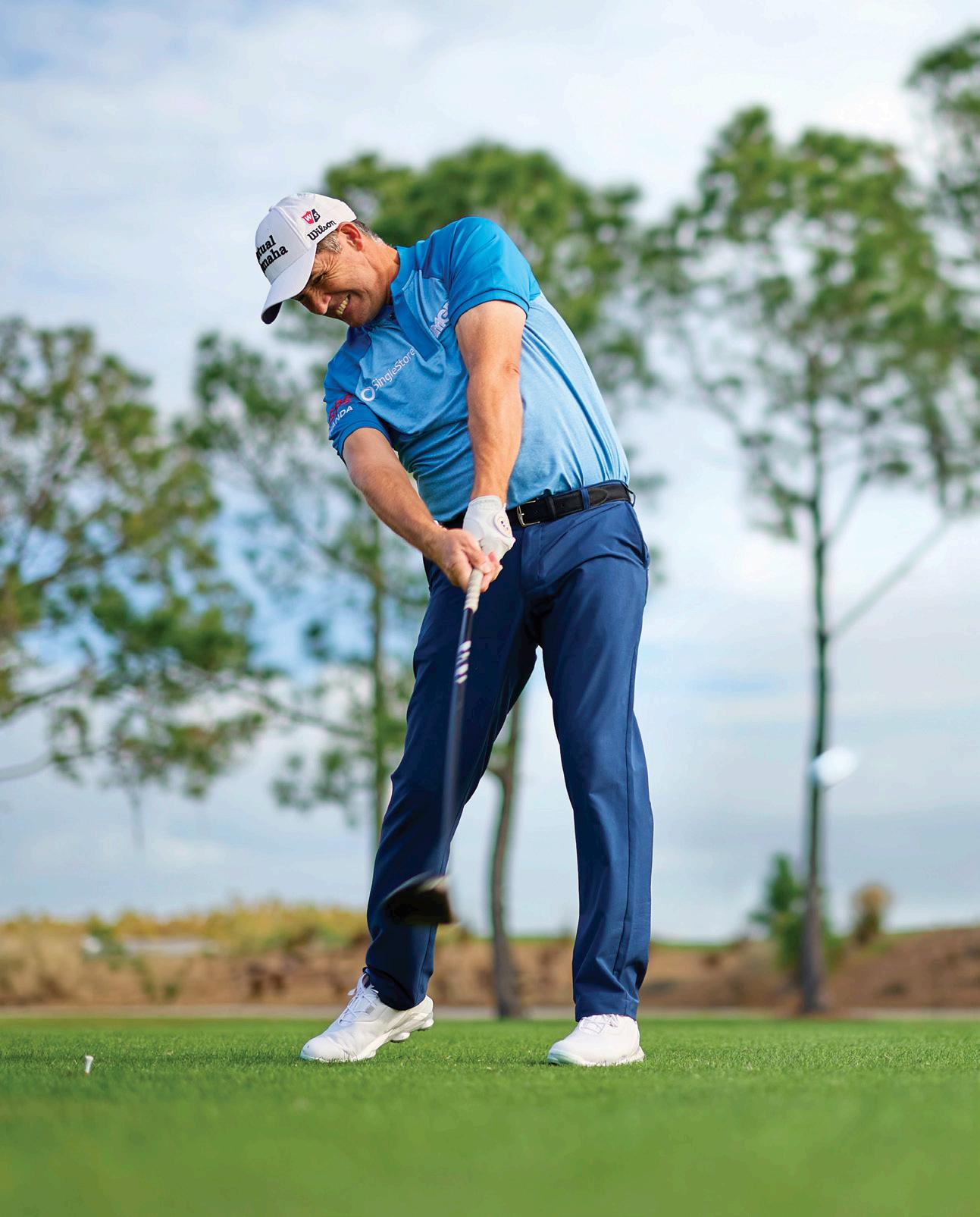
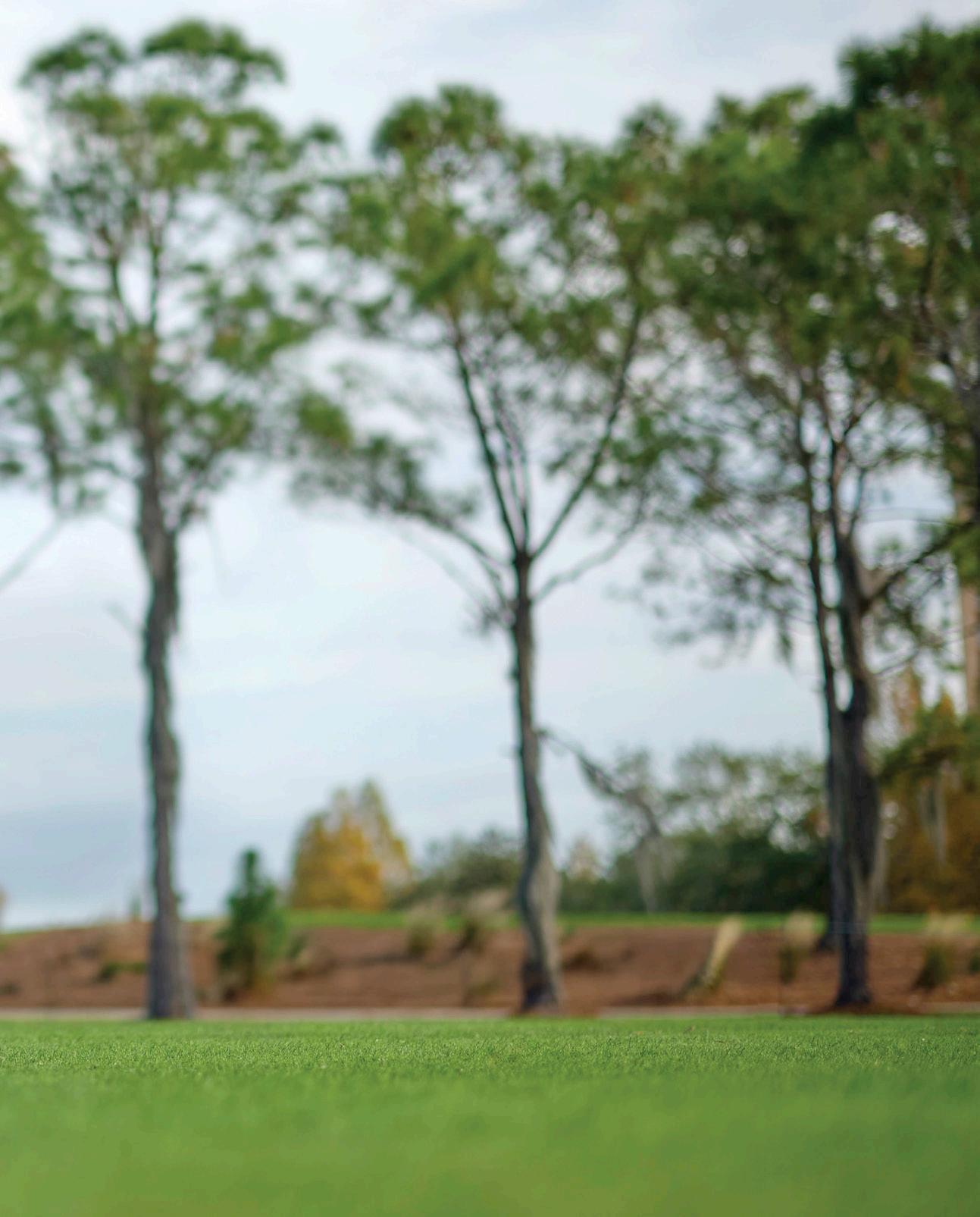
ADD YARDS AND TAKE YEARS OFF YOUR DRIVES BY PADRAIG HARRINGTON
BY

I PLAY IN PRO-AMS ALMOST EVERY WEEK, and I meet lots of golfers about my age—I’m 52—who love the game and have the goal of retiring soon and playing more golf. The problem is, many of them can barely carry the ball 200 yards. In 15 years, they might struggle to fly it 160—and if that happens, they ’re going to get frustrated and likely end up hating the game at a point in life when they should be enjoying it more than ever. It’s one of the reasons I created the YouTube Channel, “Paddy’s Golf Tips.” I wanted to offer some hope to golfers who are getting older and not hitting the ball the way they once did. I felt that way about my game, too, so I did something about it. Working hard on speed with my coach, Michael Jacobs, I’m now swinging faster and hitting it farther in my 50s than I was in my 30s—seriously! Here, I’ll share some of the things I learned about how to combat the negative aspects of aging. If you’re north of 50, the time to train is now. If you sit on your rear, you risk becomming that golfer who only carries it 160. It’s the old “use it or lose it” adage, and it’s so true when it comes to training those fast-twitch muscles necessary for speed. Read on, and I’ll help you regain some of that pop you lost off the tee. —with luke kerr-dineen



























How you address a ball greatly impacts your ability to swing the club fast and free.
One thing I learned a few years ago as I chased more speed, especially o the tee, is that you’re way better o feeling relaxed at setup than if you stand rigidly over the ball—which is how I was taught as a kid to get into my address posture. I now stand more upright with my rear end tucked underneath my slightly rounded shoulders (right). To stay loose, I’m always moving before I swing, especially my feet. Standing taller and more relaxed when you address the ball will help the fluidity of your swing. Getting all tense and hunched over is a real speed killer.

Grip changes are universally loathed, but this adjustment is crucial for speed. Rest the handle more in the fingers of both hands (far left) instead of mostly in your palms. This provides a lot of freedom when you swing. To test it, hold the club in the fingers of your gloved hand and let your arm hang by your side (left). Note how you can move the club with just your hand and wrist. Your arm doesn’t have to move like it does when you rest the club in your palms. Also experiment with grip styles that promote more suppleness. I use a “double overlap.” The pinky and ring finger of my right hand are on top of my gloved hand. Give it a try.


In Ireland, I grew up playing the Gaelic sport of hurling, which is kind of like lacrosse. In that sport, I grip the hurley with my left hand lower than my right, the opposite of how you’re supposed to hold a golf club. I got used to that
grip, so now I’ll often make my practice golf swings cross-handed (above) to work on more speed. Let me explain why.
You can generate all the power in the world with your arms and body, but that doesn’t matter if you
can’t transfer it out to the clubhead. Swinging crosshanded helps you feel that energy transfer. What it does is force the club to release past your hands as you swing through the impact zone. You’re releasing all the energy into the
ball so none of it is wasted.
When you get older and can’t move your body like you once did, relying on this release—using your hands to give the ball a good whack—becomes much more important. This drill helps train that.

Golfers sometimes get lost in swing tips and thoughts, focusing on the right positions instead of remembering a pretty important aspect of hitting golf shots: You want to feel as athletic as possible and swing without much, if any, conscious thought. We instinctively know how to move to do all sorts of things, but in golf, our brain often gets in the way.
To unlock your body and get in more of an unrestricted state, it helps to perform other dynamic motions. For example, a right-hander who swings left-handed has no frame of mind to interfere with the raw movement. Athleticism takes over. Another way to free yourself is by casually throwing golf balls onto the range (left). You’ll feel that stretch in your arms and body as you wind up, that big step toward the target before you throw, and an unwinding of the torso and hips around your posted leg as you release the ball— that move is just like an athletic golf swing!


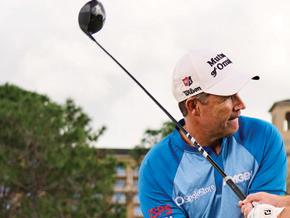




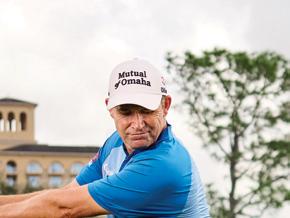
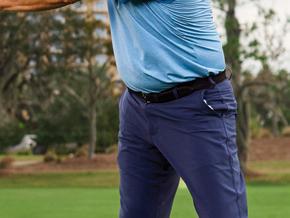




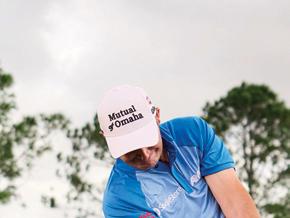
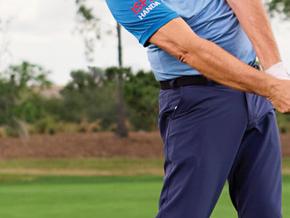
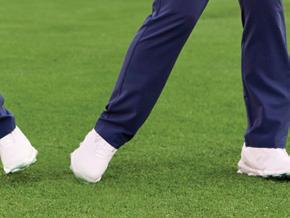

I’ve played entire tournaments stepping laterally toward the target as I swing. I even did it in the U.S. Open at Winged Foot in 2006. Every time I was in heavy rough, I’d take a little step with my left foot on
my way through. It gave me more speed and power in that deep, thick grass. Side-stepping like this helps if you struggle to transfer weight into your lead foot at the optimal time. (Tip: It should happen in your swing a


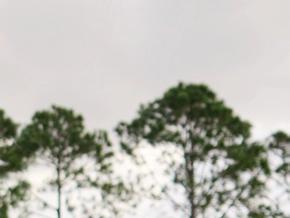
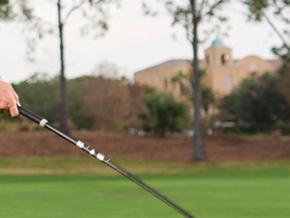



little sooner than you might think.) I have a good drill to improve your timing. Tee up a ball and address it with your feet together about a stride-length behind where you normally would (above, left). Stay that way as you take the
club back but before you reach the top of the swing, take a big step toward your target (above, center), plant that foot, and then swing through (above, right). This drill might feel strange initially, but it’s great for more power.

I can tell how good most golfers are before they even swing. You just have to watch them move. However, I will say that bad golf swings aren’t always the result of aging or poor physical fitness.
Nowadays, many amateurs are getting their golf instruction on social media from people they’ve never heard of. A common piece of bad advice is to stay down and swing in the same posture you started in at address. When I see golfers trying that, they might manage to stay down, but they can’t move or turn freely. They’re in big trouble.
Instead, I’d much rather see you rising up as the club moves through impact. You want to squeeze your glutes and thrust up with your legs, which in turn whips the club through impact. As you swing down, use your trail foot to push off the turf like a sprinter coming out of the blocks (left). That’s how you pick up some serious swing speed and hit one way down the fairway past the much younger guys!









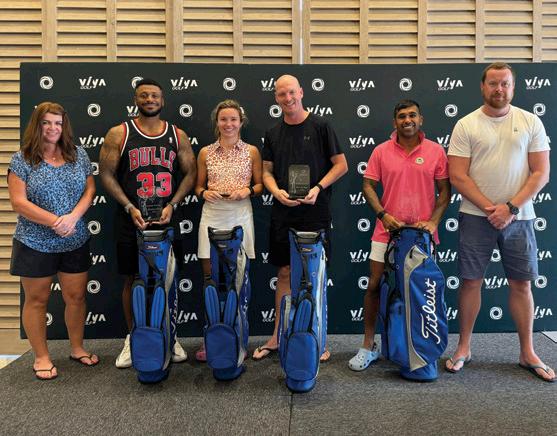

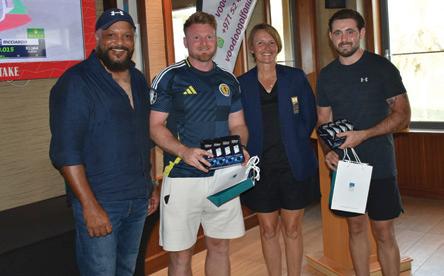









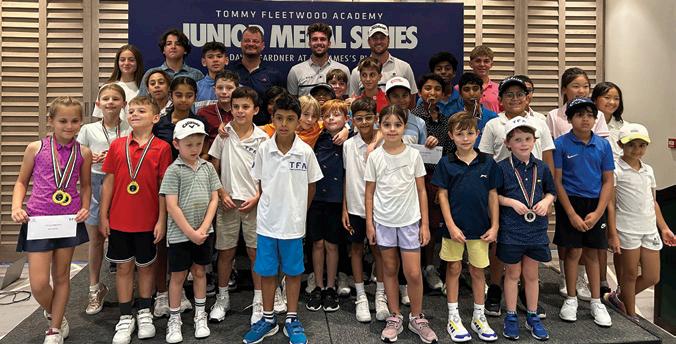




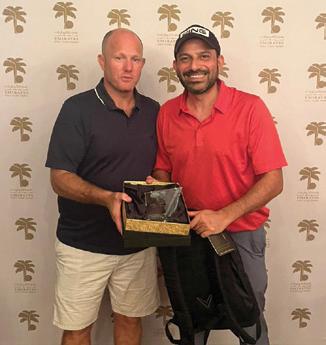



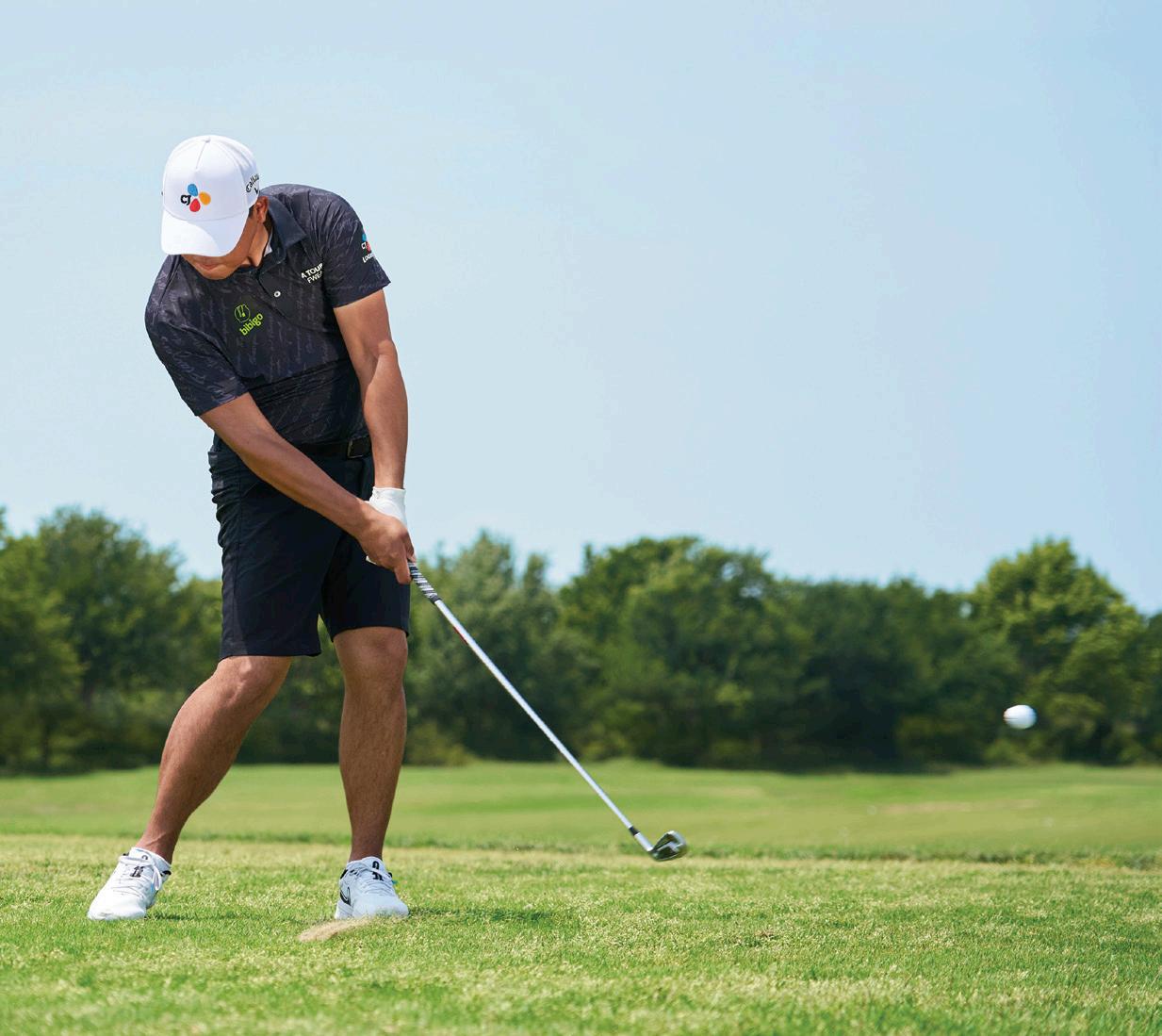
Try Si Woo Kim’s bold fix for eliminating hooks
By Ron Kaspriske
This is si woo kim. A fourtime PGA Tour winner, Kim is best known for capturing the 2017 Players Championship. What separates him from many golfers is that he’s able to swing aggressively through impact, letting the clubface close noticeably without fear of hooking the ball. He and his coach, Chris Como, will explain why. First, let’s talk about you.
As golf season ramps up, you may find that you’ve developed a ball flight that curves sharply left of your target (for righties). Now you’re looking for a fast fix, and that’s where Kim and Como, No. 2 on Golf Digest’s list of the 50 Best Teachers in America, can assist.
Kim plays with a “weak” grip, meaning his hands are more on top of the handle then off to its side. Looking down at address, he sees one or two knuckles on his gloved hand, and the crease between his thumb and forefinger points toward his chin. This orientation, Como says, enables Kim to rotate his body as aggressively as he wants in the downswing without fear that the clubface will be closed relative to his swing path at impact—which is how you hook it. For most amateurs, the body stops rotating on the downswing prematurely while the arms and club keep going, and that shuts the face and curves the ball way off line as a result.

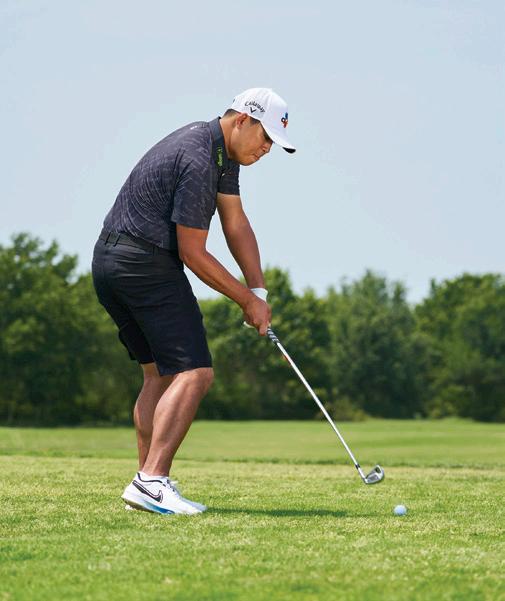
Weakening your grip and focusing on keeping your body moving well past impact (bottom photo, right) is a sure way to prevent a hook—but there’s a catch.
A weak grip can lead to a slice, Como says, because it makes it easier to leave the clubface open relative to your swing


path. An adjustment has to be made. In Kim’s case, he bows his left wrist as he takes the club back (top photo, left), and that’s how he stops the face from opening at impact. If you decide to copy Kim’s bowed wrist, one additional adjustment is required. Note how Kim
swings down from inside his target line in the images above. That’s critical to avoiding a slice.
To recap: Weaken your grip, bow your lead wrist, keep your body moving and swing down from the inside—and your hook will be cured forever.

AGE 31
LIVES
Las Vegas, USA
STORY
Won back-to-back U.S. Women’s Amateurs and six LPGA Tour events, including one major.
TRY EVERYTHING
From 2015 to 2021, I didn’t have a club-endorsement deal, so I tested di erent brands. In 2021, I had 13 Titleist clubs in my bag and later became a Titleist brand ambassador. I like to be involved when it comes to my clubs, and the team at Titleist has been incredible to talk to and learn from as they created this set.

Titleist TSR3, 9°, Basileus Trias 50 S-Flex shaft.

—WITH KEELY LEVINS
I played an 8-degree driver my whole life, but recent swing changes have changed my angle of attack by almost 4 degrees. To compensate for that, I switched to a 9-degree driver.
Titleist TSR2+, 14.5°, Mitsubishi Tensei 1K Pro White 50 R-Flex shaft; Titleist TSi3, 18°, Mitsubishi Tensei AV Raw White 65 R-Flex shaft.

We changed my 3-wood loft, too. I keep a 21-degree TSR3 hybrid on standby. If I’m o and can’t generate enough speed with my 4-iron, I sub in the hybrid.
Titleist T100 (4-9-iron), Nippon NS Pro 950GH S-Flex shafts.
I played the 716 CBs for seven years. I tested the T100s recently and absolutely love them. Titleist put a custom grind on each iron to create better feel through the ground. I wanted higher trajectory to get the ball to stop faster on the greens.

Titleist Vokey Design SM7 (44.10F, 49.08F) and SM10 (53.14F), WedgeWorks 58.06K, Nippon NS Pro 950GH S-Flex
The SM7 pictured here is an older model. I play two SM7s and two of Vokey’s newest model, the SM10. The feeling I’m looking for is the ability to control the toe. Vokey’s grinds are the best for spin control. I have two 58-degree wedges, one as a gamer and one for practice, to help the grooves last longer.



THE RIGHT SPIN
I tested the Pro V1x against the Pro V1 and found the spin is better with the x for me. I tend to be flat and under, so I’m looking for more spin and height.

My brother, Alex, gave me a dream catcher when I was 14. I qualified for the U.S. Women’s Open and won the U.S. Women’s Am with it. It fell off, and I lost the Canadian Am by one. Now I always have one on my bag, and it has to be given by Alex.



Scotty Cameron M3 GSS Tour prototype putter, 33 inches, 3° of loft.
I dug into the history of putters, what Nicklaus, Snead and Jones putted with. I wanted mine to resemble a wedge, and I got to watch Scotty Cameron make this. He eyeballed the center, and I cut the alignment line. Everything about this putter is gorgeous. He’s an artist.



I work with nutritionists to create my oncourse eating plan: hard-boiled eggs for protein, dried sweet potatoes for carbs and rice cakes with cashew butter for fats.

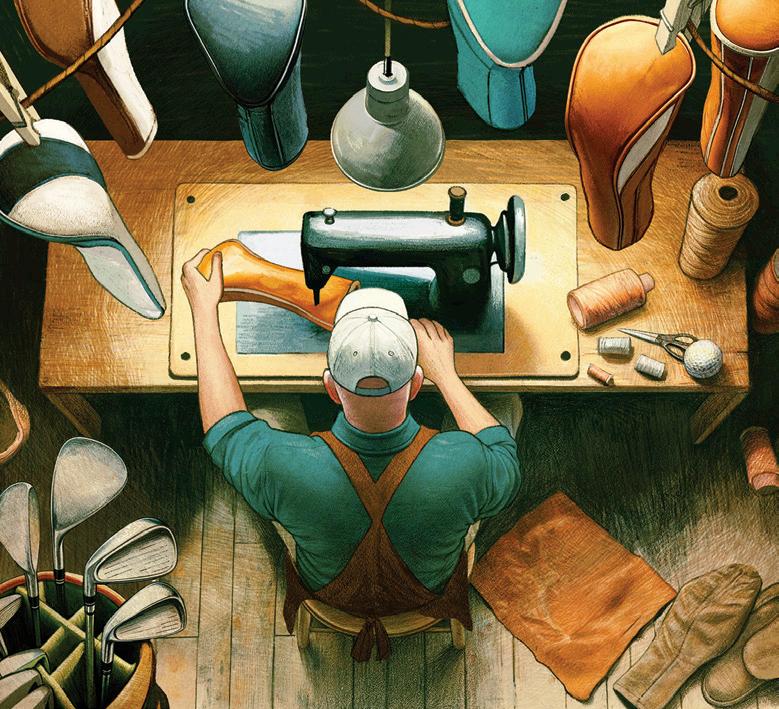
The unlikely story of a man who quit his job to hand-stitch headcovers and succeeded
By Matthew Rudy
For most golfers, pandemic work from home meant getting in a few more rounds. For Marc Hanson, it meant getting into the golf business.
Hanson had moved into customer management for a global healthcare company after retiring from the Navy as a lieutenant commander in 2014. The pandemic both packed his clients’ calendars and freed up his with travel restricted. “I had time on my hands that I wasn’t using, and I was trying to think of something to get my brother for Christmas,” Hanson says. He decided to try to make a barreltype headcover in the style of makers like Seamus out of a keepsake pin flag his brother had given him years ago from an outing at Newport Country Club. After a month of trying—and destroying an antique sewing machine his now-wife had received from her grandmother—Hanson had found what would become his vocation.
He started Bluetross to produce the handmade leather headcovers he
learned to make, but they’re like the standard covers that come on your $600 driver in shape only. Hanson sources premium Italian and Horween leather commonly found in luxury handbags and hand makes headcovers designed to acquire patina and improve with use, making them $200 accessories that last far longer than the clubs they’re protecting. “I like to say our stuff wears in, not out. I want people to throw it on the ground, onto the wet grass when they’re dew sweeping in the morning,” he says. “That’s going to make it look better three years from now. Put a little neutral shoe cream on it every once in a while, and buff it out, and it could go to your grandkids.”
You may have first seen a Bluetross cover on our cover—Hanson designed a bespoke black and orange driver lid that was the central visual element of the 2024 Hot List edition—but his headcovers had already been in demand around Hanson’s Charleston, South Carolina, home base. Bluetross has made member-guest gifts for the Daniel Island
Club the past three years, and Hanson introduced an innovation there that expanded his product line and showed off his craftsmanship. Players could choose a headcover or a leather tote designed to be given as a token of appreciation to a significant other stuck with extra child-care duty during the four-day event. “We have people come and register and ask, ‘So what do you have this year because my wife said I have to get her another bag,’ ” Hanson says. “That’s very affirming to know you’re making something somebody truly appreciates.”
Hanson sells some stock pieces from the Bluetross website but also takes commissions where he riffs on a customer’s preferred color scheme. Patches, stripes and the Bluetross leather tag get attached to the base leather, which is cut into the headcover blank. From end to end the process to make a cover by hand takes between an hour and 90 minutes, depending on the complexity of the patches or logo. There’s no vast assembly line in Hanson’s garage, so there’s a hard cap on the number of pieces he can turn out in a week.
In addition to keeping up with the tide of new orders—lead times have increased to four weeks—Hanson must carefully manage his inventory of leather. He keeps one hide of each stock color he offers for each of the three varieties of leather used in covers, bags and accessories like yardage book covers. The varieties range in thickness, firmness and finish and give Hanson a color and three-dimensional cutout palette from which to work. One small section of hide can cost upward of $300 from his supplier, and the construction process involves using an industrial stitching machine to make and reinforce seams and produce fine detail like contrast stitching across two different textures of leather. Taking an order with a non-stock color or many individual pieces requires careful supply-chain management—a talent Hanson acquired when he was managing logistics for fleets of nuclear-powered vessels in the Navy.
Hanson’s ambition is to grow in a way that lets him add local artisans and preserve handmade quality at a scale that makes it possible to feed larger clients like destination resorts. It’s a long way from shining his own shoes in basic training—and from burning up the motor on an old keepsake Singer.




Attractions
Activities


Dining
Health
Education
Entertainment
Real Estate




Hotels & Resorts
The

